
The Innovators: How a Group of Inventors, Hackers, Geniuses and Geeks Created the Digital Revolution
by
Walter Isaacson
Published 6 Oct 2014
“Human ingenuity,” wrote Leonardo da Vinci, whose Vitruvian Man became the ultimate symbol of the intersection of art and science, “will never devise any inventions more beautiful, nor more simple, nor more to the purpose than Nature does.” There is, however, yet another possibility, one that Ada Lovelace would like, which is based on the half century of computer development in the tradition of Vannevar Bush, J. C. R. Licklider, and Doug Engelbart. HUMAN-COMPUTER SYMBIOSIS: “WATSON, COME HERE” “The Analytical Engine has no pretensions whatever to originate anything,” Ada Lovelace declared. “It can do whatever we know how to order it to perform.” In her mind, machines would not replace humans but instead become their partners. What humans would bring to this relationship, she said, was originality and creativity.
…
In addition to sources cited below, this section also draws on Joan Baum, The Calculating Passion of Ada Byron (Archon, 1986); William Gibson and Bruce Sterling, The Difference Engine (Bantam, 1991); Dorothy Stein, Ada (MIT Press, 1985); Doron Swade, The Difference Engine (Viking, 2001); Betty Toole, Ada: Prophet of the Computer Age (Strawberry, 1998); Benjamin Woolley, The Bride of Science (Macmillan, 1999); Jeremy Bernstein, The Analytical Engine (Morrow, 1963); James Gleick, The Information (Pantheon, 2011), chapter 4. Unless otherwise noted, quotes from Ada’s letters rely on the Toole transcriptions. Writers about Ada Lovelace range from canonizers to debunkers. The most sympathetic books are those by Toole, Woolley, and Baum; the most scholarly and balanced is Stein’s. For a debunking of Ada Lovelace, see Bruce Collier, “The Little Engines That Could’ve,” PhD dissertation, Harvard, 1970, http://robroy.dyndns.info/collier/. He writes, “She was a manic depressive with the most amazing delusions about her talents. . . .
…
Lady Byron’s first cousin Viscount Melbourne (who had the misfortune of having been married to Lady Caroline Lamb, by then deceased) was the prime minister, and he arranged that, in Queen Victoria’s coronation list of honors, William would become the Earl of Lovelace. His wife thus became Ada, Countess of Lovelace. She is therefore properly referred to as Ada or Lady Lovelace, though she is now commonly known as Ada Lovelace. That Christmas of 1835, Ada received from her mother the family’s life-size portrait of her father. Painted by Thomas Phillips, it showed Lord Byron in romantic profile, gazing at the horizon, dressed in traditional Albanian costume featuring a red velvet jacket, ceremonial sword, and headdress.

12 Bytes: How We Got Here. Where We Might Go Next
by
Jeanette Winterson
Published 15 Mar 2021
That theory is delightfully lampooned through the character of Mr Mybug, in Stella Gibbons’ novel Cold Comfort Farm. Strangely, not strangely(?), Brontë Zone and Ada Zone mansplaining is still alive and well on the web. More accurately, and more importantly, there is now Ada Lovelace Day, celebrated on the second Tuesday of October. In the UK we have the Ada Lovelace Institute (founded 2018), an independent body whose mission is to ensure that data use and AI technology work for the benefit of society as a whole – and not for the self-entitled few. As a female mathematician, Ada stands as a beacon for women in maths and computing.
…
Courage Calls to Courage Everywhere Collaborations LAND (with Antony Gormley and Clare Richardson) Children’s Books Tanglewreck The Lion, the Unicorn and Me The King of Capri The Battle of the Sun 12 BYTES HOW WE GOT HERE WHERE WE MIGHT GO NEXT JEANETTE WINTERSON Grove Press New York Copyright © 2021 by Jeanette Winterson Jacket details: woman © Michael Nelson/Trevillion Images; portrait of Ada Lovelace by Alfred Chalon © Science Museum/SSPL; frame © Getty Images All rights reserved. No part of this book may be reproduced in any form or by any electronic or mechanical means, including information storage and retrieval systems, without permission in writing from the publisher, except by a reviewer, who may quote brief passages in a review.
…
Yet from the coining of a term – AI – 40 years would pass before IBM’s Deep Blue beat Kasparov at chess in 1997. That’s because computational power is the sum of computer storage (memory) and processing speed. Simply, computers weren’t powerful enough to do what McCarthy, Minsky and Turing knew they would be able to do. And before those men, there was Ada Lovelace, the early-19th century genius who inspired Alan Turing to devise the Turing Test – when we can no longer tell the difference between AI and bio-human. We aren’t there yet. Time is hard to gauge. * * * These 12 bytes are not a history of AI. They are not the story of Big Tech or Big Data, though we often meet on that ground.

The Creativity Code: How AI Is Learning to Write, Paint and Think
by
Marcus Du Sautoy
Published 7 Mar 2019
Studying Babbage’s plans some years later for the Analytical Engine, it dawned on Ada, now married to the Earl of Lovelace, that this was more than just a number cruncher. She began to record what it might be capable of. ‘The Analytical Engine does not occupy common ground with mere “calculating machines.” It holds a position wholly its own, and the considerations it suggests are more interesting in their nature.’ Ada Lovelace’s notes are now recognised as the first inroads into the creation of code. That kernel of an idea has blossomed into the artificial intelligence revolution that is sweeping the world today, fuelled by the work of pioneers like Alan Turing, Marvin Minsky and Donald Michie. Yet Lovelace was cautious as to how much any machine could achieve: ‘It is desirable to guard against the possibility of exaggerated ideas that might arise as to the powers of the Analytical Engine.
…
You can allow algorithms to roam the digital landscape and learn just as a child does. Today’s code created by machine learning is making surprisingly insightful moves, spotting previously undiscovered features in medical images, and investing in shrewd trades on the stock market. This generation of coders believes it can finally prove Ada Lovelace wrong: that you can get more out than you programmed in. Yet there is still one realm of human endeavour that we believe the machines will never be able to touch, and that is creativity. We have this extraordinary ability to imagine and innovate and to create works of art that elevate, expand and transform what it means to be human.
…
This is why, as a mathematician, I am attentive to how successful the new AI is being in gaining entry to the world’s galleries, concert halls and publishing houses. The great German mathematician Karl Weierstrass once wrote: ‘a mathematician that is not something of a poet will never be a true mathematician.’ As Ada Lovelace perfectly encapsulates, you need a bit of Byron as much as Babbage. Although she thought machines were limited, Lovelace began to realise the potential of these machines of cogs and gears to express a more artistic side of its character: It might act upon other things besides number … supposing, for instance, that the fundamental relations of pitched sounds in the science of harmony and of musical composition were susceptible of such expression and adaptations, the engine might compose elaborate and scientific pieces of music of any degree of complexity or extent.

Coders: The Making of a New Tribe and the Remaking of the World
by
Clive Thompson
Published 26 Mar 2019
sequence of numbers: My description of Lovelace’s life and work draws from James Essinger, Ada’s Algorithm: How Lord Byron’s Daughter Ada Lovelace Launched the Digital Age (New York: Melville House, 2014); Betsy Morais, “Ada Lovelace, the First Tech Visionary,” New Yorker, October 15, 2013, accessed August 18, 2018, https://www.newyorker.com/tech/elements/ada-lovelace-the-first-tech-visionary; Amy Jollymore, “Ada Lovelace, An Indirect and Reciprocal Influence,” Forbes, October 15, 2013, accessed August 18, 2018, https://www.forbes.com/sites/oreillymedia/2013/10/15/ada-lovelace-an-indirect-and-reciprocal-influence; Valerie Aurora, “Deleting Ada Lovelace from the History of Computing,” Ada Initiative, August 24, 2013, accessed August 18, 2018, https://www.newyorker.com/tech/elements/ada-lovelace-the-first-tech-visionary; Amy Jollymore, “Ada Lovelace, An Indirect and Reciprocal Influence,” Forbes, October 15, 2013, accessed August 18, 2018, https://www.forbes.com/sites/oreillymedia/2013/10/15/ada-lovelace-an-indirect-and-reciprocal-influence; Valerie Aurora, “Deleting Ada Lovelace from the History of Computing,” Ada Initiative, August 24, 2013, accessed August 18, 2018, https://adainitiative.org/2013/08/24/deleting-ada-lovelace-from-the-history-of-computing.
…
sequence of numbers: My description of Lovelace’s life and work draws from James Essinger, Ada’s Algorithm: How Lord Byron’s Daughter Ada Lovelace Launched the Digital Age (New York: Melville House, 2014); Betsy Morais, “Ada Lovelace, the First Tech Visionary,” New Yorker, October 15, 2013, accessed August 18, 2018, https://www.newyorker.com/tech/elements/ada-lovelace-the-first-tech-visionary; Amy Jollymore, “Ada Lovelace, An Indirect and Reciprocal Influence,” Forbes, October 15, 2013, accessed August 18, 2018, https://www.forbes.com/sites/oreillymedia/2013/10/15/ada-lovelace-an-indirect-and-reciprocal-influence; Valerie Aurora, “Deleting Ada Lovelace from the History of Computing,” Ada Initiative, August 24, 2013, accessed August 18, 2018, https://www.newyorker.com/tech/elements/ada-lovelace-the-first-tech-visionary; Amy Jollymore, “Ada Lovelace, An Indirect and Reciprocal Influence,” Forbes, October 15, 2013, accessed August 18, 2018, https://www.forbes.com/sites/oreillymedia/2013/10/15/ada-lovelace-an-indirect-and-reciprocal-influence; Valerie Aurora, “Deleting Ada Lovelace from the History of Computing,” Ada Initiative, August 24, 2013, accessed August 18, 2018, https://adainitiative.org/2013/08/24/deleting-ada-lovelace-from-the-history-of-computing. it contained a bug: Eugene Eric Kim and Betty Alexandra Toole, “Ada and the First Computer,” Scientific American, May 1999, 76–81.
…
Things had regressed to worse than the point they were at in 1960. Nearly every other technical field has had increasing numbers of women arrive. Programming is the one field where things went backward, and women were actually chased away. Why? It’s often noted that the first computer programmer ever was a woman: Ada Lovelace. As a young mathematician in Victorian England, she met Charles Babbage, the inventor who was trying to create an Analytical Engine. The Engine was a steampunk precursor to the modern computer: Though designed to be made of metal gears, it could execute loops and store data in memory. More even than Babbage, Lovelace grasped the enormous potential of computers.
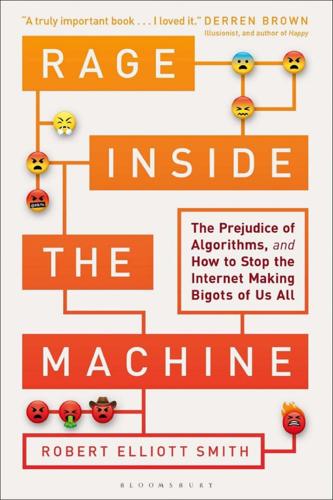
Rage Inside the Machine: The Prejudice of Algorithms, and How to Stop the Internet Making Bigots of Us All
by
Robert Elliott Smith
Published 26 Jun 2019
Unlike Mary Edwards, and even Mary Wollstonecraft, Ada Lovelace had every social advantage. She was a rich aristocrat by birth and marriage who had both fortune and fame. She was not denied an education in science and maths, and she made obvious, published contributions under her own name. Despite all this, her contribution did nothing to shift the movable window that was focused on separate spheres, even among contemporary scientists who were sure to have known her. One of those scientists was, of course, Charles Darwin who likely knew of Ada Lovelace’s abilities, perhaps even her formal contributions.
…
In her notes, Ada set about describing the Analytical Engine’s function, which was not clearly understood even by other notable scientists. She also added a section detailing a method for computing a series of values known as Bernoulli Numbers (named for the same mathematician who gave us the first probability distribution), which would have run correctly if the machine had ever been built. It is for this contribution that Ada Lovelace is often described as the world’s first computer programmer; however, that description fails to capture the real novelty and insight of her contribution. While Babbage, Menabrea and others had primarily thought of the Analytical Engine as a number-crunching machine, a reconfigurable version of the Pascaline, or a mechanical version of de Prony’s human computer factories, Lovelace realized it could do more, writing that it ‘might act upon other things besides numbers, were objects found whose mutual fundamental relations could be expressed by those of the abstract science of operations’.8 Lovelace’s suggestion is the view forward from calculators like the Pascaline to modern symbol-processing algorithms, with a nod back to the ideas of Llull and Leibniz, that computing could be about symbols rather than numbers.
…
One of those scientists was, of course, Charles Darwin who likely knew of Ada Lovelace’s abilities, perhaps even her formal contributions. It’s possible that they may have met as they both attended Babbage’s popular soirees, but it would have been while Ada was more famous than he as well as being significantly superior to him socially. Ada Lovelace died of uterine cancer on 27 November 1852. Almost exactly seven years later Darwin rose to become the most famous scientist in history with the publication of On the Origin of Species on 24 November 1859. Journalist Angela Saini’s excellent book Inferior,9 which exposes the centuries-old discrimination against women across the scientific spectrum, in biology, psychology, anthropology, philosophy and, more recently, neuroscience, begins by recounting a correspondence between Charles Darwin and Bostonian Caroline Kennard who was an active member in the Massachusetts women’s movement.
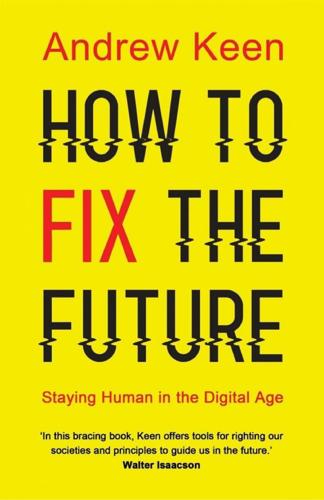
How to Fix the Future: Staying Human in the Digital Age
by
Andrew Keen
Published 1 Mar 2018
Computers, the thinking machines imagined by the Victorian mathematician Ada Lovelace and her business partner, Charles Babbage, in the mid-nineteenth century, are the defining invention of the last couple of hundred years, Wolfram explains. But the one thing that they don’t possess, he insists, is what he calls “goals.” Computers don’t know what to do next, he says. We can’t program them to know that. They couldn’t write the next paragraph of this book. They can’t fix the future. Wolfram is a great admirer of Ada Lovelace, and his argument is, essentially, a rephrasing of her thoughts on the intellectual limitations of computer software.
…
And the same is true of even the smartest thinking machines, he says. If one of these machines could talk, we couldn’t understand its real meaning, because of our differences. If machines could speak our language, they wouldn’t be able to fully understand us, because we have goals and they, as Ada Lovelace explains, can’t “originate” anything. The truth about the meaning of “humanity” is that there’s no truth. No absolute truth, at least. Every generation defines it according to its own preoccupations and circumstances. So, for example, the humanism of the original Renaissance was rooted in discovering and then reconnecting with a history that had been lost in the Dark Ages.
…
What it means to be human today is bound up in our relationship with networked technology, particularly thinking machines. If there is to be a new renaissance, this relationship with smart tech will be the core of its new humanism. Wolfram’s definition, with its focus on human volition, is both timely and timeless. Our unique role in the early twenty-first century is, in Ada Lovelace’s words, to be able to “originate” things. This is what distinguishes us from smart machines. But it’s also an updated version of More’s Law, with its reminder of our mortality and its focus on our civic responsibility to make the world a better place. The way to solve the most vexing problems of the future, the WEF CEO Klaus Schwab says, is by creating a story about people—a human narrative.
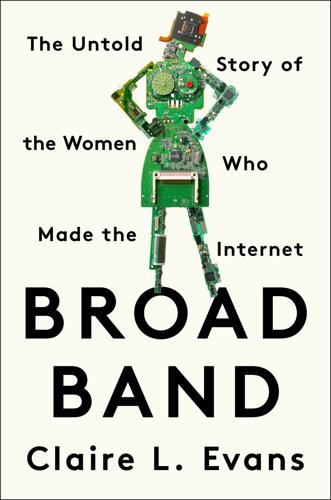
Broad Band: The Untold Story of the Women Who Made the Internet
by
Claire L. Evans
Published 6 Mar 2018
They will sprout up everywhere, all over the world, and work with the same dogged, unrelenting focus. Other people will keep getting the credit, until one day they won’t anymore. And then your history will be written, a hundred times, by teenage girls at their desks in the heart of their kingdoms, on machines beyond your wildest imagination. KILOGIRLS By her insistence, Ada Lovelace was buried next to her father in a small church near his ancestral estate of Newstead Abbey. Her coffin, finished in soft violet velvet, bore an inscription of the Lovelace family motto, an axiom she’d embraced as her own while toiling over her notes on Babbage’s Analytical Engine. LABOR IPSE VOLUPTAS, it read.
…
And although it was funded by the military to churn out firing tables as fast as the army could manufacture guns, the ENIAC was much more than a ballistics calculator. Pres and Mauchly had designed a general-purpose computer—think of the difference between Charles Babbage’s one-note Difference Engine and the speculative Analytical Engine, which so entranced Ada Lovelace. It could perform an essentially limitless number of computational functions, as long as new programs for it were written. In its time at the Moore School, it would calculate the zero-pressure properties of diatomic gases, model airflow around supersonic projectiles, and discover numerical solutions for the refraction of shock waves.
…
But with “both the expertise to devise solutions and the incentive to make programming easier for experts and novices alike,” they were in a unique position to effect real change, and did. Grace Hopper wasn’t the first woman to believe in programming, automatic or otherwise. Many of Grace’s female peers worked tirelessly to develop and standardize programming strategies that would transform the early computer industry, just as Ada Lovelace had made the mental leap from hardware to software a century before. But although the Difference Engine was never finished and the Analytical Engine was only imaginary, she knew, just as Grace did: a computer that does only one thing isn’t really a computer. It’s just a machine. Chapter Five THE COMPUTER GIRLS In 1967, the April issue of Cosmopolitan ran an article, “The Computer Girls,” about programming.
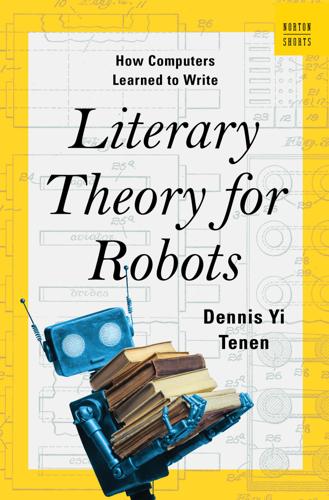
Literary Theory for Robots: How Computers Learned to Write
by
Dennis Yi Tenen
Published 6 Feb 2024
Here, a sharp-eyed arcanist may find a worthwhile mystery: Finally, a puzzle for those who have studied exactly these sorts of things, like corpuses and taxonomies, editions and redactions, catalogs, summaries, translations, and archives—a rich trove of textual goodies! In this book, we will similarly observe the history of artificial intelligence through the looking glass of inscription. History tells us that computers compute not only in the mathematical sense but universally. The number was incidental to the symbol. In the 1840s, Ada Lovelace, daughter of Lord Byron and one of the first “programmers” in the modern sense, imagined an engine that could manipulate any symbolic information whatsoever (not just numbers). A century later, Alan Turing extended that blueprint to imagine a “universal machine,” capable of reading from and writing to an infinite string of characters.
…
Chapter 4 Floral Leaf Pattern Augusta Ada King (née Byron), Countess of Lovelace, loved poetry and numbers. She also had a gambling problem. And was likely using the first computer ever to bet on horses. The conventional story has Charles Babbage, another Royal Society member, together with Ada Lovelace originating the concept of a digital programmable computer sometime in the 1820s. Things were a bit more complicated, however. The Analytical Engine, as Babbage called his lifelong project, had its numerous mechanical precursors, directly in the lineage of Ibn Khaldun, Llull, Kircher, Wilkins, Leibniz, and many others.
…
Chapters from Aristotle’s Politics come to mind, where the author similarly cannot help himself from exhausting a catalog of lowly farm animals on route to high-minded topics like war and justice. Neither Aristotle nor Babbage tolerated an epistemic mess, obsessively compelled to make lists, even in passing. Young Ada Lovelace, a daughter of nobility, visited Babbage’s fashionable salons alongside other illustrious visitors like Charles Darwin, Michael Faraday, and Charles Dickens. She was introduced for the first time by her math tutor, Sophia Elizabeth De Morgan, a close friend of the family and wife of a prominent English mathematician.

In Our Own Image: Savior or Destroyer? The History and Future of Artificial Intelligence
by
George Zarkadakis
Published 7 Mar 2016
Nor did he write a manual to describe how the Analytical Engine functioned. However, in 1842 the Italian mathematician and military engineer Luigi Menabrea (1809–1896) wrote a description of the machine in French. One year later Countess Ada Lovelace, the daughter of Lord Byron, translated the description into English. Included in her translation was the first computer program ever written, which makes Ada Lovelace the inventor of software. Ada Lovelace (1815–1852) was the only legitimate child of Lord Byron. A month after she was born, her father abandoned her and her mother, and travelled to Italy, where he would ultimately meet up with Percy Bysshe and Mary Shelley by Lake Geneva the following summer.
…
By annotating her translation of Menabrea’s description of the Analytical Engine,10 Ada Lovelace gave us one of the most significant documents in the history of computing. Impressed with the potential of her friend’s design, she wrote: ‘Mr Babbage believes he can, by his engine, form the product of two numbers, each containing twenty figures, in three minutes.’ She then proceeded to demonstrate how the Analytical Engine would work by writing an executable algorithm that could calculate the sequence of the Bernoulli numbers.11 This algorithm is considered to be the first software program ever written. The Analytical Engine and Ada Lovelace’s ‘first program’ have been subjects of fascination for historians and fiction writers alike.
…
The influence of mechanical automata in Hoffmann’s work is not surprising – after all, this was the age when the mechanical Turk was touring Europe and setting alight the imagination of writers and artists. Hoffmann’s work, as well as the ballets based on his stories, would later influence two of the most important heroes in the history of Artificial Intelligence, the English mathematician Charles Babbage and Lord Byron’s daughter Ada Lovelace. These two would go on to invent the first general-purpose computer and write the first computer program respectively. But the achievements of Babbage and Ada still lay in the future at the time when Byron and his friends delved into Hoffmann’s dark fantasy world. In June 1816, Europe was in ruins following the end of the Napoleonic Wars.

The Information: A History, a Theory, a Flood
by
James Gleick
Published 1 Mar 2011
♦ “ANY PROCESS WHICH ALTERS THE MUTUAL RELATION”: Note A (by the translator, Ada Lovelace) to L. F. Menabrea, “Sketch of the Analytical Engine Invented by Charles Babbage,” in Charles Babbage and His Calculating Engines, 247. ♦ “THE ANALYTICAL ENGINE DOES NOT OCCUPY COMMON GROUND”: Ibid., 252. ♦ “THE ENGINE EATING ITS OWN TAIL”: H. Babbage, “The Analytical Engine,” paper read at Bath, 12 September 1888, in Charles Babbage and His Calculating Engines, 331. ♦ “WE EASILY PERCEIVE THAT SINCE EVERY SUCCESSIVE FUNCTION”: Note D (by the translator, Ada Lovelace) to L. F. Menabrea, “Sketch of the Analytical Engine Invented by Charles Babbage
…
He met the Sardinian king, Charles Albert, and, more significantly, an ambitious young mathematician named Luigi Menabrea. Later Menabrea was to become a general, a diplomat, and the prime minister of Italy; now he prepared a scientific report, “Notions sur la machine analytique,”♦ to introduce Babbage’s plan to a broader community of European philosophers. As soon as this reached Ada Lovelace, she began translating it into English, correcting errors on the basis of her own knowledge. She did that on her own, without telling either Menabrea or Babbage. When she finally did show Babbage her draft, in 1843, he responded enthusiastically, urging her to write on her own behalf, and their extraordinary collaboration began in earnest.
…
Mechanical rules: for the logic operated inexorably, with no room for varying human interpretation. Its symbols were drained of meaning. Anyone could verify a proof step by step, by following the rules, without understanding it. Calling this quality mechanical invoked the dreams of Charles Babbage and Ada Lovelace, machines grinding through numbers, and numbers standing for anything at all. Amid the doomed culture of 1930 Vienna, listening to his new friends debate the New Logic, his manner reticent, his eyes magnified by black-framed round spectacles, the twenty-four-year-old Gödel believed in the perfection of the bottle that was PM but doubted whether mathematics could truly be contained.

Thinking Machines: The Inside Story of Artificial Intelligence and Our Race to Build the Future
by
Luke Dormehl
Published 10 Aug 2016
However, as the question of creativity has become more prominent within AI circles, some people have suggested that a new test needs to be created. The first person involved with modern computing to discuss the subject of machine creativity was one of the world’s first computer programmers, Ada Lovelace. The daughter of no less a creative force than the Romantic poet Lord Byron, Ada Lovelace worked alongside Charles Babbage on his Analytical Engine in the 1800s. This was intended to be history’s first mechanical general-purpose computer, although due to a lack of funding it was never completed. Lovelace was impressed by the idea of building the Analytical Engine, but she argued that it would never be considered capable of true thinking, since it was only able to carry out pre-programmed instructions.
…
‘What the patent office means by an “illogical step” is that it is more than something you would inevitably think of were you to plod along working on something based entirely on the past,’ Koza explains. Why does that matter? Because, Koza says, if computers are only good at performing logical operations, how can they take an illogical step? It would certainly be enough to have Ada Lovelace scratching her head. Congratulations to the Chef In September 2015, I ate my first meal from a recipe prepared by an AI. It was an Indian turmeric paella, a combination of cuisines which was both unusual and, as it turned out, delicious. I was following a recipe created by IBM’s Watson, the Jeopardy!
…
The very first story to ever feature the word ‘robot’, a 1920 science-fiction play by Karel Čapek called Rossum’s Universal Robots, ends with its titular AI beings rising up against their human overlords and taking over Earth. Humanity is, inevitably, all but wiped out in the process. Earlier than that was Mary Shelley’s 1818 novel, Frankenstein; or, The Modern Prometheus. Dreamed up during a summer spent at the home of Lord Byron (a.k.a. Ada Lovelace’s father), the novel tells the story of a young science student who creates a sentient creature that proceeds to run amok. The ‘Frankenstein Complex’ is a term which has become used to describe the fear that mankind has of artificial creation. It’s a theme since revisited time and again, in everything from the sci-fi stories of Isaac Asimov to the airport thrillers of Michael ‘Jurassic Park’ Crichton to recent movies like Ex Machina.

Protocol: how control exists after decentralization
by
Alexander R. Galloway
Published 1 Apr 2004
Chapter 6 184 personal computer, cyberspace, viruses, video games, multimedia,30 and so on—cultural critic Sadie Plant had this to say: “Hardware, software, wetware—before their beginnings and beyond their ends, women have been the simulators, assemblers, and programmers of the digital machines.”31 That the three occupations named here carry less clout then others one can imagine (Engineer, CEO, etc.) does not diminish the strength of Plant’s argument: that computers are, and have always been, a technology of the female. Plant’s coup is the unveiling of Ada Lovelace, a female protagonist drawn from computing prehistory. More on her later. Plant reaches beyond mythmaking—for what else can Lovelace be at this stage in the game—into a complex relationship between women and machines. This relationship, tied up in problematics surrounding identity, technology, and the body, is at the heart of the 1990s movement called cyberfeminism.
…
Like French feminist Luce Irigaray before her, Plant argues that patriarchal power structures, which have unequally favored men and male forms in society, should be made more equal through a process of revealing and valorizing overlooked female elements. Her book Zeros and Ones turns on the story of Ada Lovelace, the world’s first computer programmer. As assistant to Charles Babbage, Lovelace helped build early calculation machines that many consider critical to the prehistory of computer science. Championing Lovelace over Babbage, Plant’s goal is to recuperate this lost female origin from within the history of technology.36 However, as her manifesto-like “Feminisations: Reflections on Women and Virtual Reality” shows, Plant wishes not to valorize some negative space created by patriarchy, but to unveil the always already feminine space of technology.
…
“Masculine identity has everything to lose from this new technics,” prophesizes Plant. “The sperm count falls as the replicants stir and the meat learns how to learn for itself. Cybernetics is feminisation.”37 The universality of protocol can give feminism something that it never had at its disposal, the obliteration of the masculine from beginning to end. 36. Ada Lovelace’s influence has not been completely lost. Aside from her roles in various science fiction novels, there is the late, eponymous Web art site äda ’web (http://adaweb.walkerart.org) and Lynn Hershman Leeson’s film Conceiving Ada. 37. Sadie Plant, “Feminisations: Reflections on Women and Virtual Reality,” in Clicking In, ed.
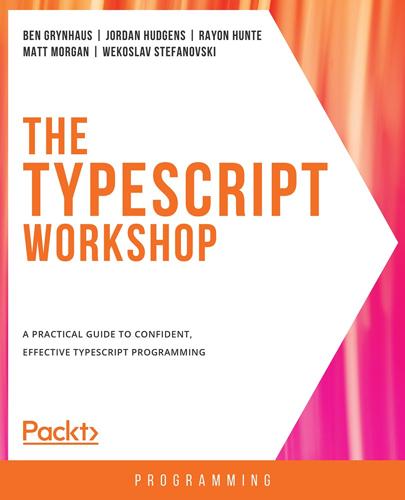
The TypeScript Workshop: A Practical Guide to Confident, Effective TypeScript Programming
by
Ben Grynhaus
,
Jordan Hudgens
,
Rayon Hunte
,
Matthew Thomas Morgan
and
Wekoslav Stefanovski
Published 28 Jul 2021
For example, we can define a function called showFullName that will take a person object and display the full name to the console: function showFullName (person: Person) { console.log(`${person.firstName} ${person.lastName}`) } If we invoke this function with showFullName(person), we'll see that it will display Ada Lovelace on the console. We can also define a function that will take two strings, and return a new object that fits the Person interface: function makePerson (name: string, surname: string): Person { const result = { firstName: name, lastName: surname } return result; } const babbage = makePerson("Charles", "Babbage"); showFullName(babbage); One important thing that we need to point out is that, unlike in other languages, the interfaces in TypeScript are structural and not nominal.
…
Exercise 1.04: Examining typeof In this exercise, we'll see how to use the typeof operator to determine the type of a value, and we will investigate the responses: Note The code files for this exercise can be found here: https://packt.link/uhJqN. Create a new file called type-test.ts. In type-test.ts, define several variables with differing values:const daysInWeek = 7; const name = "Ada Lovelace"; const isRaining = false; const today = new Date(); const months = ["January", "February", "March"]; const notDefined = undefined; const nothing = null; const add = (x:number, y: number) => x + y; const calculator = { add } Add all the variables into a containing array, using the array literal syntax:const everything = [daysInWeek, name, isRaining, today, months, notDefined, nothing, add, calculator]; Loop all the variables using a for..of loop, and for each value, call the typeof operator.
…
Show the result on the console, along with the value itself:for (const something of everything) { const type = typeof something; console.log(something, type); } Save the file and run the following command in the folder:tsc type-test.ts After the compilation is done, you will have a type-test.js file. Execute it in the node environment with the following command:node type-test.js You will see that the output is as follows: 7 number Ada Lovelace string false boolean 2021-04-05T09:14:56.259Z object [ 'January', 'February', 'March' ] object undefined undefined null object [Function: add] function { add: [Function: add] } object Note specifically the output from the months and nothing. typeof variables will return the string "object" both for arrays and the null value.
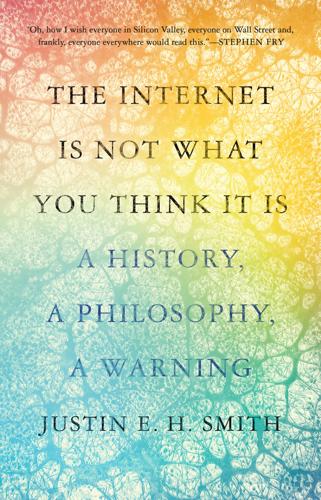
The Internet Is Not What You Think It Is: A History, a Philosophy, a Warning
by
Justin E. H. Smith
Published 22 Mar 2022
LEIBNIZ (1716) [T]hose who … think on the mathematical truth as the instrument through which the weak mind of man can most effectually read his Creator’s works, will regard with especial interest all that can tend to facilitate the translation of its principles into explicit practical forms. —ADA LOVELACE (1843) This is the struggle with describing social media: it devours importance. —LAUREN OYLER, FAKE ACCOUNTS (2021) CONTENTS Acknowledgments ix Introduction. “Let us calculate!” 1 1 A Sudden Acceleration 14 Our Critical Moment 14 Paying Attention 21 Gadget Being 38 The Tragicomedy of the Private Commons 49 2 The Ecology of the Internet 57 Signals 57 “All things conspire” 59 Nature’s Technique 65 Cetacean Clicking and Human Clicking; or, the Late-Adopter Problem 69 “I see a vestige of man” 78 3 The Reckoning Engine and the Thinking Machine 85 Aboutness 85 “They don’t give a damn” 88 Dark Conjurations 100 “The ruling principles of the day” 111 4 “How closely woven the web”: The Internet as Loom 124 Warp and Woof 124 Algebraic Weaving 127 Why Do Metaphors Matter?
…
Yet, as an imaginative representation of their power, the idea of an omniscient demon that sits in our home and answers questions for us has been a significant incentive in the effort to find the proper arrangement of gears and circuits to simulate such a thing. In other words, if Bacon (or someone like him) had not had his fantasy in the thirteenth century (or something like it), perhaps Leibniz would not have designed his reckoning engine in the seventeenth century, and Ada Lovelace and Charles Babbage would not have created their analytical engine in the nineteenth century, and so on down to the present day. Alongside the history of computer science narrowly understood, we should perhaps chart a parallel history, an imaginary museum of all the machines that only existed as fantasy, as rumor, as mere items on a wish list alongside so many other things that the alchemists and conjurers knew how to envision but had no idea how to bring about: perpetual motion machines, universal solvents, artificial life.
…
Wenchao Li, “… ‘früh bestelle, und etwas hinein bringe, so geld bringe!’ Leibniz’ Garten in Hannover,” in Joachim Wolschke-Buhlman (ed.), Gartenkultur im Spannungsfeld zwischen Arkadien und Soldatenfriedhöfen, Munich: Thomas Martin Verlagsgesellschaft, 2015. Franciscus Linus, Tractatus de corporum inseparabilitate, London, 1661. Ada Lovelace, “Notes by the Translator” on L. F. Menabrea, “Sketch of the Analytical Engine invented by Charles Babbage,” in Richard Taylor (ed.), Scientific Memoirs, selected from the Transactions of Foreign Academies of Science and Learned Societies, London: Richard and John Taylor, 1843. Lucian, A True History, trans.

How We Got to Now: Six Innovations That Made the Modern World
by
Steven Johnson
Published 28 Sep 2014
Ada’s father was not only the most notorious author of his time; he was also guilty of incest, and the offspring of this scandalous union was a girl Ada had known for many years. Annabella had volunteered the news to her daughter as definitive proof that Byron was a wretch, and that such a rebellious, unconventional lifestyle could only end in ruin. And so, at the still young age of twenty-five, Ada Lovelace found herself at a crossroads, confronting two very different ways of being an adult in the world. She could resign herself to the settled path of a baroness and live within the boundaries of conventional decorum. Or she could embrace those “peculiarities of [her] nervous system” and seek out some original path for herself and her distinctive gifts.
…
In choosing between domestic stability and some unknown break from convention, she was, in a sense, choosing between her mother and her father. To stay settled at Ockham Park was the easier path; all the forces of society propelled her toward it. And yet, like it or not, she was still Byron’s daughter. A conventional life seemed increasingly unthinkable. But Ada Lovelace found a way around the impasse she had confronted in her mid-twenties. In collaboration with another brilliant Victorian who was equally ahead of his time, Ada charted a path that allowed her to push the barriers of Victorian society without succumbing to the creative chaos that had enveloped her father.
…
Think of Édouard-Léon Scott de Martinville inventing his sound-recording device a generation before Edison began working on the phonograph. Scott was able to imagine the idea of “writing” sound waves because he had borrowed metaphors from stenography and printing and anatomical studies of the human ear. Ada Lovelace could see the aesthetic possibilities of Babbage’s Analytical Engine because her life had been lived at a unique collision point between advanced math and Romantic poetry. The “peculiarities” of her “nervous system”—that Romantic instinct to see beyond the surface appearances of things—allowed her to imagine a machine capable of manipulating symbols or composing music, in a way that even Babbage himself had failed to do.

Geek Wisdom
by
Stephen H. Segal
Published 2 Aug 2011
Forbidden Planet, the greatest science-fiction film ever inspired by Shakespeare, explored the id more tangibly in 1956. “ONLY SPARTAN WOMEN GIVE BIRTH TO REAL MEN.” —QUEEN GORGO, 300 “THE ANALYTICAL ENGINE WEAVES ALGEBRAIC PATTERNS, JUST AS THE JACQUARD LOOM WEAVES FLOWERS AND LEAVES.” —ADA LOVELACE, ON CHARLES BABBAGE’S ANALYTICAL ENGINE THE REAL QUEEN GORGO of Sparta was a political mover and shaker on par with the modern age’s most respected power brokers. She was also a geek and early cryptanalyst, helping her fellow Spartans find the code hidden in a chiseled wooden board that warned of impending Persian attack.
…
Placed in this female-to-female context, Gorgo’s declaration becomes less a statement on her value in the eyes of men and more subversive—perhaps an encouragement from one woman to another on methods of escaping oppression and gaining power of her own. Gorgo may also have been implying that men can be partners in this process, if they are willing … or pawns, shaped from birth by the power of maternal influence, if not. Nineteenth-century writer Ada Lovelace may be one of the first women to triumph over the historical biases against Queen Gorgo. Though in her lifetime she was most known as the poet Byron’s daughter, today she’s remembered as the world’s first computer programmer. “OUT OF MY WAY. I’M GOING TO SEE MY MOTHER.” —SEPHIROTH, FINAL FANTASY VII SEPHIROTH: BADASS.

The Future Is Faster Than You Think: How Converging Technologies Are Transforming Business, Industries, and Our Lives
by
Peter H. Diamandis
and
Steven Kotler
Published 28 Jan 2020
But Ada’s ideas included a new idea, a novel way for the analytical engine to perform calculations. Ada Lovelace wrote the world’s first published computer program—our first algorithm. Unfortunately, maybe it was the strain of her discoveries, maybe it was just bad luck, but not long after she finished the translation, Ada fell ill. The world’s first computer programmer and one of the most interesting minds in history was dead by age thirty-six. And this raises a second question: How many of us die before we’re done? What might Ada Lovelace or Albert Einstein or Steve Jobs have accomplished with an additional thirty years of healthy life?
…
To compete in today’s accelerated climate, these models are designed for speed and agility. Most importantly, none of this is in any danger of slowing down. Force #7: Longer Lives Computers run our world and algorithms run computers, which begs the question: Where do algorithms come from? Fear of poetry, that’s where. Fear of the maddening influence of poetry. Ada Lovelace was born in 1815, in London, the daughter of the infamous genius poet, Lord Byron. When Byron deserted the family before Ada was a teenager, her mother took charge of her education. A very intelligent woman, Lady Byron hired tutors for her daughter, particularly emphasizing math and science skills—which was a fairly radical step at a time when women were not really allowed into either profession.
…
See: https://www.hypergridbusiness.com/2015/11/second-life-gdp-totals-500-million/. The Experience Economy: Joseph Pine and James Gilmore, “Welcome to the Experience Economy,” Harvard Business Review, July-August 1998. Harvard’s Clayton Christensen: Mark Johnson, Reinvent Your Business Model (Harvard Business Press, 2018), back cover. Force #7: Longer Lives Ada Lovelace: Walter Isaacson, The Innovators (Simon & Schuster, 2014) pp. 7–33. the average caveperson hit puberty: For a great review of lifespan through history, see: https://ourworldindata.org/life-expectancy. cardiac disease and cancer: Author interview with Robert Hariri, MD, PhD, 2018. “Google’s New Project to Solve Death”: Harry McCracken, “How CEO Larry Page Has Transformed the Search Giant into a Factory for Moonshots.

When Einstein Walked With Gödel: Excursions to the Edge of Thought
by
Jim Holt
Published 14 May 2018
The originator of group theory, Évariste Galois, was killed in a duel before he reached his twenty-first birthday. The most revolutionary mathematician of the last half century, Alexander Grothendieck, ended his turbulent days as a delusional hermit in the Pyrenees. The creator of the theory of infinity, Georg Cantor, was a kabbalistic mystic who died in an insane asylum. Ada Lovelace, the cult goddess of cyber feminism (and namesake of the programming language used by the U.S. Department of Defense), was plagued by nervous crises brought on by her obsession with atoning for the incestuous excesses of her father, Lord Byron. The great Russian masters of infinity, Dmitri Egorov and Pavel Florensky, were denounced for their antimaterialist spiritualism and murdered in Stalin’s Gulag.
…
She has been hailed as a technological visionary; credited with the invention of binary arithmetic; made into the cult goddess of cyber feminism. It is an index of her prestige as a scientific virtuosa that Tom Stoppard, in his play Arcadia, presents a character based upon Ada groping her way toward the law of entropy and the theory of chaos, not to mention a proof of Fermat’s last theorem. The notion of Ada Lovelace as the inventor of computer programming appeals to the imagination because it contains two improbabilities and an irony. Improbability one: that computer programming, that seemingly masculine preserve, could have been invented by a woman. Improbability two: that the first program could have been written more than a century before a real computer came into existence.
…
Instead, he plays up her Byronic afflatus, saluting her as a practitioner of “poetical science.” Through her lyrical similes—most famously, “the Analytical Engine weaves algebraical patterns just as the Jacquard-loom weaves flowers and leaves”—Ada “managed to rise above the technical minutiae of Babbage’s extraordinary invention to reveal its true grandeur.” If Ada Lovelace did not invent computer programming, is it at least fair to say that Charles Babbage invented the computer? Woolley’s biography of Ada makes much of the fact that Babbage never got his Analytical Engine built. The explanation, he argues, was not Babbage’s eccentric perfectionism or the limitations of contemporary engineering; it was that the Victorian world was simply not ready for the computer.
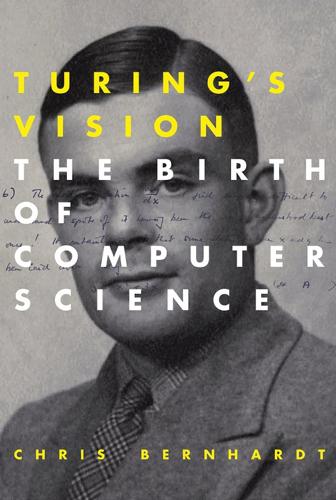
Turing's Vision: The Birth of Computer Science
by
Chris Bernhardt
Published 12 May 2016
As we commented before, things that are difficult to see from one viewpoint become easier from another. We will look at some of these ideas in the next chapter. 5 Other Systems for Computation “We may say most aptly, that the Analytical Engine weaves algebraical patterns just as the Jacquard-loom weaves flowers and leaves.” Ada Lovelace In 1823, with substantial funding from the British government, Charles Babbage began the construction of his first “Difference Engine.” The mathematical tables of the time contained many errors that were caused by human computers. Babbage’s Difference Engine was to be a mechanical calculator.
…
In 1801, Joseph-Marie Jacquard had designed a mechanical loom that could weave intricate patterns based on operations controlled by a sequence of punched cards. Babbage realized he could use the same idea for his machine. He had designed the programmable computer. Augusta Ada King, Countess of Lovelace, now usually known as just Ada Lovelace, was the daughter of the poet Lord Byron. Her mother, concerned about the mental instability in Lord Byron’s family, decided that her daughter should study mathematics to help build her mental defenses. This, along with the fact that she had a natural talent for mathematics, resulted in Lovelace being tutored and mentored by some of the best mathematicians of the time.

Tools for Thought: The History and Future of Mind-Expanding Technology
by
Howard Rheingold
Published 14 May 2000
Babbage wrote books of varying degrees of coherence, made breakthroughs in some sciences and failed in others, gave brilliant and renowned dinner parties with guests like Charles Darwin, and seems to have ended up totally embittered. Bowden noted that "Shortly before Babbage died he told a friend that he could not remember a single completely happy day in his life: 'He spoke as if he hated mankind in general, Englishmen in particular, and the English Government and Organ Grinders most of all.'" While Ada Lovelace has been unofficially known to the inner circles of programmers since the 1950s, when card-punched batch-processing was not altogether different from Ada's kind of programming, she has been relatively unknown outside those circles until recently. In the 1970s, the U.S. Department of defense officially named its "superlanguage" after her.
…
He was widely known to have a huge repertoire of jokes in several languages, a vast knowledge of risqu� limericks, and a casual manner of driving so recklessly that he demolished automobiles at regular intervals, always managing to emerge miraculously unscathed. Despite his apparently charmed existence, von Neumann, like Ada Lovelace and Alan Turing, died relatively young. Lovelace died of cancer at thirty-six, Turing of cyanide at forty-two, and von Neumann of cancer at fifty-three. Like many other Los Alamos veterans, he may have been a victim of exposure to radiation during the early nuclear bomb tests. His death came as a shock to all who knew him as a vital, lively, peripatetic, seemingly invulnerable individual.
…
These principles were discovered through a strange concatenation of events, and the people who were involved in those events were no less unusual than the software patriarchs who preceded them. Eccentrics and prodigies of both the blissful and agonized varieties dominated the early history of computation. Ada Lovelace, George Boole, John von Neumann, Alan Turing, and Presper Eckert were all in their early twenties or younger when they did their most important work. All except Eckert were also more than a little bizarre. But for raw prodigy combined with sheer imaginative eccentricity, Norbert Wiener, helmsman of the cybernetic movement, stands out even in this not-so-ordinary crowd.

Why Information Grows: The Evolution of Order, From Atoms to Economies
by
Cesar Hidalgo
Published 1 Jun 2015
We talk of the imagination of poets, the imagination of artists, and I am inclined to think that in general we don’t know very much exactly what we are talking about. It is [that] which penetrates into the unseen worlds around us, the worlds of science. It is that which feels and discovers what is, the real which we see not, which exists not for our senses. —ADA LOVELACE That’s all the motorcycle is, a system of concepts worked out in steel. There’s no part in it, no shape in it, that is not out of someone’s mind. —ROBERT M. PIRSIG Consider two types of apples: those that grow on trees and you buy at the supermarket, and those that are designed in Silicon Valley.
…
So when we blow-dry our hair, vacuum our floors, or make a daiquiri in a blender, we are receiving a favor from none other than Michael Faraday, someone whom we, our parents, and even our grandparents are unlikely to have met. The economy is the system that amplified the practical uses of the knowledge that was developed and accumulated in Faraday’s brain—and which was inspired in part by Ada Lovelace.2 Faraday’s ghost, therefore, lives in all electrical products, together with those of Lovelace, Tesla, Edison, Maxwell, and many other great scientists whom we know only through their work. Ultimately, the world of products is more social than what we would naively imagine, and in a deep metaphorical sense it is a world that is populated densely by ghosts.
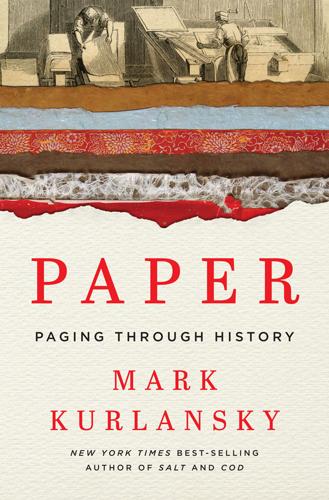
Paper: A World History
by
Mark Kurlansky
Published 3 Apr 2016
As with the invention of paper, it is not really possible to say who invented the computer or when, despite this being recent history. Lately, it has become popular to attribute the invention—as Walter Isaacson suggests in The Innovators and James Essinger affirms in Ada’s Algorithm—to Ada Lovelace, poet Lord Byron’s neglected and brilliant daughter. In the early nineteenth century, she wrote the first algorithm intended to be carried out by a machine. The computer age does seem to have its origins in the Industrial Revolution, and Ada Lovelace was probably the first to write about a machine that could be programmed to work on any problem. But her ideas were based on those of Charles Babbage, who had built a machine, the Difference Engine, that could make calculations.
…
But her ideas were based on those of Charles Babbage, who had built a machine, the Difference Engine, that could make calculations. Her most famous work is an 1843 treatise on the potential of Babbage’s machine. Forty years earlier, Joseph-Marie Jacquard had invented a loom that could be programmed with punch cards. Ada Lovelace was probably familiar with that machine because when the Luddites tried to smash them, her father, Lord Byron, famously spoke in the Luddites’ defense. Jacquard’s work probably also led Babbage to imagine his calculating machine, also programmable with punch cards. In any event, Jacquard must be given some credit for the 1890 US Census, which Herman Hollerith was able to complete in one year instead of the estimated eight through the use of punch cards and electronics.

The Long History of the Future: Why Tomorrow's Technology Still Isn't Here
by
Nicole Kobie
Published 3 Jul 2024
Certain inventions had to arrive before others could follow: faster and cheaper computers enabled everything, while neural networks took off thanks to Graphics Processing Units (GPUs), wearable computers required lithium batteries, driverless cars were lost without satnav, smart cities needed connected sensors and so on. * * * Computing began in the 1820s with Charles Babbage and Ada Lovelace, who managed to design the world’s first computer and write programs for it, respectively, though the steam-powered Difference Engine was never fully completed in Babbage’s lifetime.3 So much for the idea that the only way to predict the future is to build it. Alan Turing did the same in the following century, inventing core aspects of modern computing as well as AI before either could exist in the physical world.
…
Check out the full investigation at https://biturl.top/yA3aYv 2 You can read my story for WIRED about this annual tradition here, but know that the UK government has continued to make this announcement each year since: https://biturl.top/raaqU3 3 Daniel Crevier writes in his history of the subject, AI: The Tumultuous History of the Search for Artificial Intelligence, that Ada Lovelace, daughter of the famous poet Lord Byron, is perhaps unfairly credited with inventing computer programming as her ideas were never tested because Babbage’s machines remained unbuilt due to technological limitations. But given that we credit others, including Alan Turing, for having ideas on paper before they could be brought into the real world, I don’t see why she should be punished for Babbage’s failures.
…
Annoyed, Rosen and team wrote a letter in response from the perspective of Shakey, with the robot complaining that the exaggerated account of its capabilities meant its existence was at risk because humans now feared it – Shakey begged for help from the magazine, saying it would even write a story for the magazine in exchange for a ‘nickel’s worth of electricity, a drop of light oil, and a cupful of distilled water.’14 So, Shakey set in motion plenty that informs robotics and AI even today. Perhaps it was picking low-hanging fruit, as Hart has humbly said, but the project was full of firsts in computer vision, navigation and more. Hart argues his colleague Helen Chan Wolf should be known as the Ada Lovelace of robotics, as she has a strong claim to being the world’s first programmer of robots. Shakey also sparked careers that influenced the industry in other ways. Bill Gates tells a story about being shown the SRI video – the one with Rosen as a gremlin harassing Shakey – and driving south from Seattle to San Francisco to see how it all worked.

Nine Algorithms That Changed the Future: The Ingenious Ideas That Drive Today's Computers
by
John MacCormick
and
Chris Bishop
Published 27 Dec 2011
So the next time you enjoy some high-definition satellite TV on the weekend, spare a thought for this delicious irony: it was the frustration of Richard Hamming's weekend battle with an early computer that led to our own weekend entertainment today. 6 Pattern Recognition: Learning from Experience The Analytical Engine has no pretensions whatever to originate anything. It can do whatever we know how to order it to perform. —ADA LOVELACE, from her 1843 notes on the Analytical Engine In each previous chapter, we've looked at an area in which the ability of computers far outstrips the ability of humans. For example, a computer can typically encrypt or decrypt a large file within a second or two, whereas it would take a human many years to perform the same computations by hand.
…
Thus, pattern recognition can be defined more generally as the task of getting computers to act “intelligently” based on input data that contains a lot of variability. The word “intelligently” is in quotation marks here for good reason: the question of whether computers can ever exhibit true intelligence is highly controversial. The opening quotation of this chapter represents one of the earliest salvos in this debate: Ada Lovelace commenting, in 1843, on the design of an early mechanical computer called the Analytical Engine. Lovelace is sometimes described as the world's first computer programmer because of her profound insights about the Analytical Engine. But in this pronouncement, she emphasizes that computers lack originality: they must slavishly follow the instructions of their human programmers.
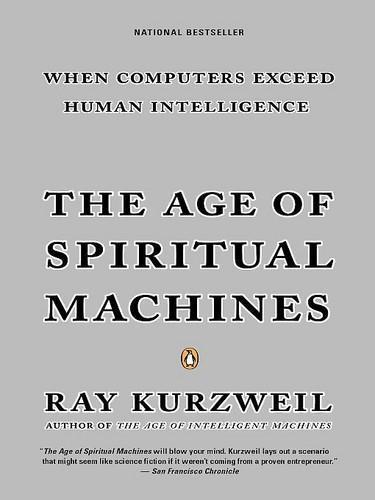
The Age of Spiritual Machines: When Computers Exceed Human Intelligence
by
Ray Kurzweil
Published 31 Dec 1998
From that moment on, Babbage devoted most of his waking hours to an unprecedented vision: the world’s first programmable computer. Although based entirely on the mechanical technology of the nineteenth century, Babbage’s “Analytical Engine” was a remarkable foreshadowing of the modem computer.1 Babbage developed a liaison with the beautiful Ada Lovelace, the only legitimate child of Lord Byron, the poet. She became as obsessed with the project as Babbage, and contributed many of the ideas for programming the machine, including the invention of the programming loop and the subroutine. She was the world’s first software engineer, indeed the only software engineer prior to the twentieth century.
…
Analog A quantity that is continuously varying, as opposed to varying in discrete steps. Most phenomena in the natural world are analog. When we measure and give them a numeric value, we digitize them. The human brain uses both digital and analog computation. Analytical Engine The first programmable computer, created in the 1840s by Charles Babbage and Ada Lovelace. The Analytical Engine had a random access memory (RAM) consisting of one thousand words of fifty decimal digits each, a central processing unit, a special storage unit for software, and a printer. Although it foreshadowed modern computers, Babbage’s invention never worked. Angel Capital Refers to funds available for investment by networks of wealthy investors who invest in start-up companies.
…
Babbage describes the features of his machine in “On the Mathematical Powers of the Calculating Engine,” written in 1837 and reprinted as appendix B in Anthony Hyman’s Charles Babbage: Pioneer of the Computer (Oxford: Oxford University Press, 1982). For biographical information on Charles Babbage and Ada Lovelace, see Hyman’s biography, and Dorothy Stein’s book Ada: A Life and a Legacy (Cambridge, MA: MIT Press, 1985). 2 Stan Augarten, Bit by Bit, 63-64. Babbage’s description of the Analytical Engine in “On the Mathematical Powers of the Calculating Engine,” written in 1837, is reprinted as appendix B in Anthony Hyman’s Charles Babbage: Pioneer of the Computer (Oxford: Oxford University Press, 1982). 3 Joel Shurkin, in Engines of the Mind, p. 104, describes Aiken’s machine as “an electromechanical Analytical Engine with IBM card handling.”
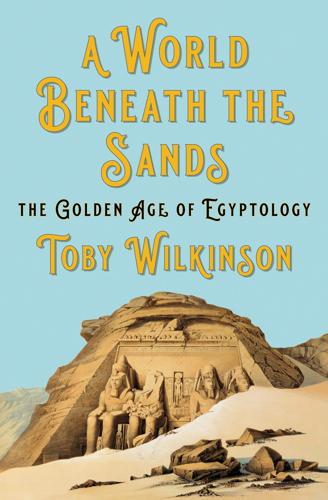
A World Beneath the Sands: The Golden Age of Egyptology
by
Toby Wilkinson
Published 19 Oct 2020
But he was soon diverted by other interests. He spent much of his time visiting his wide circle of well-read and well-heeled friends, painting refined watercolours of their country houses, indulging his love of conversation and debate. He corresponded with the scientist Charles Babbage, and with Byron’s daughter, the mathematician Ada Lovelace. He joined the Oriental Club and the Athenaeum; the latter was housed in a new building designed by James Burton’s younger brother, Decimus, and hosted the Cabinet for dinner most Wednesdays. Wilkinson’s two clubs, along with the Royal Society and the Royal Society of Literature – he had been elected a fellow of both – and the Royal Geographical Society – where he became a member of the council – provided intellectual stimulation aplenty.
…
Wilkinson maintained more than a passing interest in Egyptology, advising the British Museum, to which he had donated some of his collection of antiquities, on further acquisitions. In 1841, he finally returned to Egypt to gather material for a second edition of his Topography of Thebes (renamed Modern Egypt and Thebes (1843)). He did not like what he found. He wrote to Ada Lovelace: ‘Egypt is much spoilt since I saw it before … the travellers who go up the Nile will I fear soon be like Rhine tourists & Cheapside will pour out its legions upon Egypt.’77 Of course, these very travellers were the people for whom he was writing Modern Egypt and Thebes, just as they would be the readers of its successor volume, Murray’s A Handbook for Egypt (1847), one of a series that set the pattern for all subsequent tourist guides.
…
In 1852, Pettigrew presided over the mummification of Alexander, tenth Duke of Hamilton, and his interment in an Egyptian sarcophagus in the family mausoleum at Hamilton House, Scotland. 34.Dawson (1934): 170. 35.Rifaud (1830). 36.Wilkinson (1835): xiv. 37.Wilkinson (1835): 559–60. 38.Wilkinson (1835): 560. 39.Wilkinson (1835): 560. 40.Quoted in Ahmed (1978): 1. 41.Halls (1834): 273–4. 42.Quoted in Ahmed (1978): 24. 43.Quoted in Sattin (1988): 69. 44.Quoted in Ahmed (1978): 32. 45.Quoted in Ahmed (1978): 33. 46.Clarke (1814): 95. 47.Retrospective Review, III (1821): 96–7. 48.Ahmed (1978): 103. 49.Quarterly Review, LIX (July 1837): 165. 50.Ahmed (1978): 121. 51.Poole (1851), 1: 206. 52.Quoted in Ahmed (1978): 44. 53.Mitchell (1988): 41. 54.St John (1834), 1: viii. 55.Reid (2002): 52. 56.Sattin (1988): 49. 57.Wilkinson (1843), 1: 264. 58.Colla (2007): 118. 59.de Verninac Saint-Maur 1835, quoted in translation in Reid (2002): 1. 60.Quoted in Colla (2007): 111. 61.Gliddon (1841): 138. 62.Gliddon (1841): 88–9. 63.Gliddon (1841): 3–4. 64.Gliddon (1841): 146. 65.Colla (2007): 123. 66.He was subsequently promoted to colonel in 1837 and major-general in 1846. 67.Vyse (1840–2), 1: 1. 68.Vyse (1840–2), 1: 199. 69.Vyse (1840–2), 1: 200. 70.Vyse (1840–2), 2: 33. 71.Quoted in Tyldesley (2005): 110. 72.Vyse (1840–2), 2: 34. 73.Vyse (1840–2), 1: 236. 74.Vyse (1840–2), 1: 274. 75.Usick and Manley (2007). 76.Laws and Regulations of the Egyptian Society, Alexandria, no date, 1; quoted in Reid (2002): 49. 77.Wilkinson to Ada Lovelace, 18 May 1842, quoted in Thompson (1992): 169. 78.David Roberts (1796–1864) was the first professional artist to travel in Egypt, spending the winter of 1838–9 visiting and sketching the ancient monuments along the Nile, as well as the mosques of Cairo. During his stay, he corresponded with Hay and rented the house that had belonged to Osman Effendi, while Thomas Pettigrew unrolled one of his mummies in Roberts’s London studio.
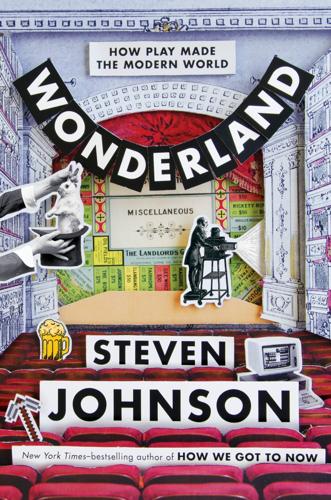
Wonderland: How Play Made the Modern World
by
Steven Johnson
Published 15 Nov 2016
But I have also advanced one stage further and without making all the cards, I have communicated through the same means orders to follow certain laws in the use of those cards and thus the Calculating Engine can solve any equations, eliminate between any number of variables and perform the highest operations of analysis. Babbage borrowed a tool designed to weave colorful patterns of fabric, which was itself borrowed from a tool for generating patterns of musical notes, and put it to work doing a new kind of labor: mechanical calculation. When his collaborator Ada Lovelace famously observed that Babbage’s analytical engine could be used not just for math but potentially for “composing elaborate . . . pieces of music,” she was, knowingly or not, bringing Babbage’s machine back to its roots, back to the “Instrument Which Plays by Itself” and Vaucanson’s flute player.
…
“We wish to explain,” the brothers: Imad Samir, Allah’s Automata: Artifacts of the Arab-Islamic Renaissance (800-1200) (Berlin: Hatje Cantz, 2015), 68–86. “Using the Jacquard loom”: James Essinger, Jacquard’s Web: How a Hand-Loom Led to the Birth of the Information Age (New York: Oxford University Press, Kindle edition), 38. “You are aware”: Essinger, 47. When his collaborator Ada Lovelace: Quoted in Johnson, How We Got to Now: Six Innovations that Made the Modern World, 249. A roster of instruments: Tim Carter, “A Florentine Wedding of 1608,” Acta Musicologica 55, Fasc. 1 (1983), 95. The chips might have followed: It would seem that typewriter-style keyboards are a condition of possibility for advanced computers, almost the way capturing and transmitting electricity was a condition of possibility for the lightbulb.
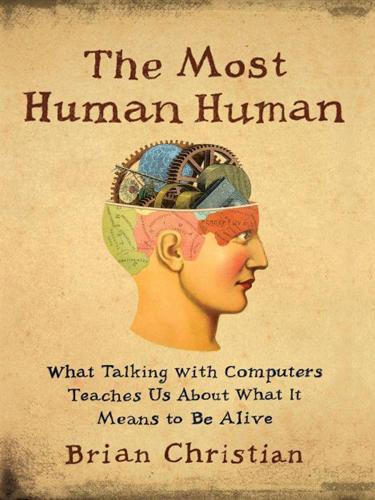
The Most Human Human: What Talking With Computers Teaches Us About What It Means to Be Alive
by
Brian Christian
Published 1 Mar 2011
In other words, another rewriting of The Sentence may be in order: our machines, it would seem, are just as “universal” as we are. Pretensions to Originate Although computer science tends to be thought of as a traditionally male-dominated field, the world’s first programmer was a woman. The 1843 writings of Ada Lovelace (1815–52, and who was, incidentally, the daughter of poet Lord Byron) on the computer, or “Analytical Engine,” as it was then called, are the wellspring of almost all modern arguments about computers and creativity. Turing devotes an entire section of his Turing test proposal to what he calls “Lady Lovelace’s Objection.”
…
Ramachandran and Sandra Blakeslee, Phantoms in the Brain: Probing the Mysteries of the Human Mind (New York: William Morrow, 1998). 10 Alan Turing, “On Computable Numbers, with an Application to the Entscheidungsproblem,” Proceedings of the London Mathematical Society, 1937, 2nd ser., 42, no. 1 (1937), pp. 230–65. 11 Ada Lovelace’s remarks come from her translation (and notes thereupon) of Luigi Federico Menabrea’s “Sketch of the Analytical Engine Invented by Charles Babbage, Esq.,” in Scientific Memoirs, edited by Richard Taylor (London, 1843). 12 Alan Turing, “Computing Machinery and Intelligence,” Mind 59, no. 236 (October 1950), pp. 433–60. 13 For more on the idea of “radical choice,” see, e.g., Sartre, “Existentialism Is a Humanism,” especially Sartre’s discussion of a painter wondering “what painting ought he to make” and a student who came to ask Sartre’s advice about an ethical dilemma. 14 Aristotle’s arguments: See, e.g., The Nicomachean Ethics. 15 For a publicly traded company: Nobel Prize winner, and (says the Economist) “the most influential economist of the second half of the 20th century,” Milton Friedman wrote a piece in the New York Times Magazine in 1970 titled “The Social Responsibility of Business Is to Increase Its Profits.”

The Big Nine: How the Tech Titans and Their Thinking Machines Could Warp Humanity
by
Amy Webb
Published 5 Mar 2019
If this was true, and if we had until this point been capable of creating lifelike ducks and tiny monks, then it should follow that someday, humans could create replicas of themselves—and build a variety of intelligent, thinking machines. Could a Thinking Machine Be Built? By the 1830s, mathematicians, engineers, and scientists had started tinkering, hoping to build machines capable of doing the same calculations as human “computers.” English mathematician Ada Lovelace and scientist Charles Babbage invented a machine called the “Difference Engine” and then later postulated a more advanced “Analytical Engine,” which used a series of predetermined steps to solve mathematical problems. Babbage hadn’t conceived that the machine could do anything beyond calculating numbers.
…
You now have a better understanding of how the Big Nine are driving AI’s developmental track, how investors and funders are influencing the speed and safety of AI systems, the critical role the US and Chinese governments play, how universities inculcate both skills and sensibilities, and how everyday people are an intrinsic part of the system. It’s time to open your eyes and focus on the boulder at the top of the mountain, because it’s gaining momentum. It has been moving since Ada Lovelace first imagined a computer that could compose elaborate pieces of music all on its own. It was moving when Alan Turing asked “Can machines think?” and when John McCarthy and Marvin Minsky gathered together all those men for the Dartmouth workshop. It was moving when Watson won Jeopardy and when, not long ago, DeepMind beat the world’s Go champions.
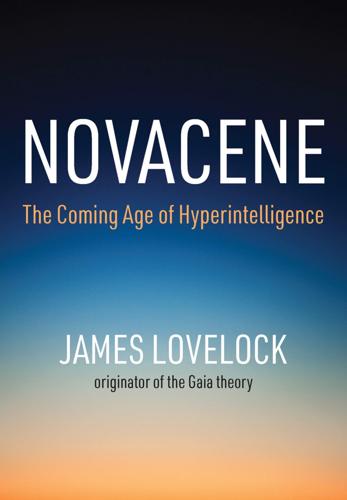
Novacene: The Coming Age of Hyperintelligence
by
James Lovelock
Published 27 Aug 2019
Nor was it the discovery that semiconductor crystals such as silicon or gallium arsenide could be used to make intricate and complex machines. Neither the idea of artificial intelligence nor the computer itself was crucial to the emergence of this new age. Remember that the inventor Charles Babbage made the first computer in the early nineteenth century, and the first programs were written by Ada Lovelace, the daughter of the poet Lord Byron. If the Novacene were no more than an idea, it was born 200 years ago. In reality, the Novacene, like the Anthropocene, is about engineering. The crucial step that started the Novacene was, I think, the need to use computers to design and make themselves, just as AlpaZero taught itself to play Go.
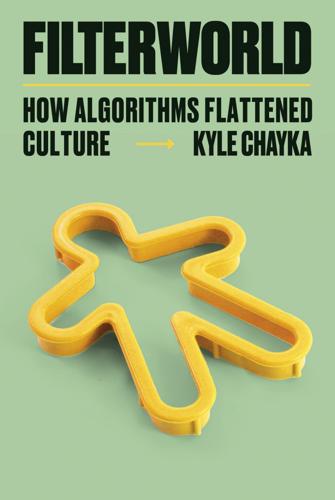
Filterworld: How Algorithms Flattened Culture
by
Kyle Chayka
Published 15 Jan 2024
His later iteration, the Analytical Engine, could, if built, take commands programmed via punch cards and perform simple programming features like loops and conditions. It was the basis for all the much more complicated modern computing that followed. As Babbage’s son Henry wrote in 1888, “It is only a question of cards and time.” Ada Lovelace, the daughter of Lord Byron, is now widely regarded as the first computer programmer; she wrote algorithms for the machine as Babbage designed it, including a process for calculating Bernoulli numbers. Lovelace also realized that the repeating mechanical processes that the machine enabled could be applied to fields beyond mathematics.
…
Still, no matter how complex, an algorithm remains in its essence an equation: a method to arrive at a desired conclusion, whether it’s a Sumerian diagram to divide an amount of grain equally among several men or the Facebook feed determining which post to show you first when you open the website. All algorithms are engines of automation, and, as Ada Lovelace predicted, automation has now moved into many facets of our lives beyond pure mathematics. ALGORITHMIC DECISION-MAKING In 1971, in Santiago, Chile, a hexagonal room designed as a kind of control room for the entire country was built in a downtown office building. Monitors and backlit displays adorned the room’s wood-paneled walls, displaying data readouts with metrics like national raw material supplies and labor participation rates.

Journey to Crossrail
by
Stephen Halliday
In 1835 she married William King, who in 1838 became Earl of Lovelace, Ada thereby becoming Countess of Lovelace. She died in 1852 aged 36, after a lifetime of ill health, and was, at her own request, buried close to her neglectful father, Byron, in the churchyard of St Mary Magdalene, Hucknall, Nottinghamshire. Along with Babbage she is regarded as one of the pioneers of computing. Ada Lovelace (1815–52), Byron’s neglected, faithful and very gifted daughter, was one of the pioneers of computing and is remembered in the tunnelling machine that bears her name. (Stipple engraving, based on a drawing by Frank Stone) Phyllis Pearsall (1906–96), designer of the London A–Z, was born Phyllis Gross in East Dulwich, the daughter of a Hungarian Jewish immigrant, Alexander Grosz (changed to Gross) and Isabella Crowley, a suffragette of Irish-Italian descent.

Exponential: How Accelerating Technology Is Leaving Us Behind and What to Do About It
by
Azeem Azhar
Published 6 Sep 2021
In my career as a journalist, first at The Guardian and then The Economist, I found myself having to explain complicated topics from the world of software engineering to a mainstream audience. And I’ve taken a particular interest in the political implications of new forms of technology. For a time, I was a non-executive member of Ofcom, the regulator that looks at the telecom, internet and media industries in the UK. In 2018, I became a board member of the Ada Lovelace Institute, where we have been looking at the ethical implications of the use of data and artificial intelligence in society. Over the last few years, I have been channelling my attempts to straddle the ‘two cultures’ into Exponential View – a newsletter and podcast that explores the impact of new technology on society.
…
Bettencourt and José Lobo, ‘Invention as a Combinatorial Process: Evidence from US Patents’, Journal of The Royal Society Interface, 12, 2015, 20150272 <https://doi.org/10.1098/rsif.2015.0272> Zenko, Micah, ‘Obama’s Final Drone Strike Data’, Council on Foreign Relations, 2017 <https://www.cfr.org/blog/obamas-final-drone-strike-data> [accessed 12 January 2021] Index The page references in this index correspond to the print edition from which this ebook was created, and clicking on them will take you to the location in the ebook where the equivalent print page would begin. To find a specific word or phrase from the index, please use the search feature of your ebook reader. Abu Dhabi, UAE, 250 Acemoglu, Daron, 139 Acorn Computers, 16, 21 Ada Lovelace Institute, 8 additive manufacturing, 43–4, 46, 48, 88, 166, 169, 175–9 Adidas, 176 advertising, 94, 112–13, 116, 117, 227–8 AdWords, 227 aeroponics, 171 Afghanistan, 38, 205 Africa, 177–8, 182–3 Aftenposten, 216 Age of Spiritual Machines, The (Kurzweil), 77 agglomeration, 181 Air Jordan sneakers, 102 Airbnb, 102, 188 aircraft, 49–50 Alexandria, Egypt, 180 AlexNet, 33 Algeciras, HMM 61 Alibaba, 48, 102, 108, 111, 122 Alipay, 111 Allen, Robert, 80 Alphabet, 65, 113–14, 131, 163 aluminium, 170 Amazon, 65, 67–8, 94, 104, 108, 112, 122, 135–6 Alexa, 25, 117 automation, 135–6, 137, 139, 154 collective bargaining and, 163 Covid-19 pandemic (2020–21), 135–6 drone sales, 206 Ecobee and, 117 Go stores, 136 Kiva Systems acquisition (2012), 136 management, 154 Mechanical Turk, 142–3, 144, 145 monopoly, 115, 117, 122 Prime, 136, 154 R&D, 67–8, 113 Ami Pro, 99 Amiga, 16 Anarkali, Lahore, 102 anchoring bias, 74 Android, 85, 94, 117, 120 Angola, 186 Ant Brain, 111 Ant Financial, 111–12 antitrust laws, 114, 119–20 Apache HTTP Server, 242 Appelbaum, Binyamin, 63 Apple, 47, 62, 65, 85, 94, 104, 108, 112, 122 App Store, 105, 112, 115 chip production, 113 Covid-19 pandemic (2019–21), 222–3 data collection, 228 iOS, 85 iPhone, 47, 62, 85, 94, 105 media subscription, 112 watches, 112 APT33 hacker group, 198 Aral, Sinan, 238 Aramco, 108, 198 Armenia, 206–7 Arthur, William Brian, 110, 123 artificial intelligence, 4, 8, 31–4, 54, 88, 113, 249 academic brain drain, 118 automation, 125–42 data and, 31–2, 142 data network effect, 106–7 drone technology and, 208, 214 education and, 88 employment and, 126–7 healthcare and, 88, 103 job interviews and, 153 regulation of, 187, 188 arXiv, 59 Asana, 151 Asian Development Bank, 193 Aslam, Yaseen, 148 Assembly Bill 5 (California, 2019), 148 asymmetric conflict, 206 AT&T, 76, 100 Atari, 16 attack surfaces, 192–3, 196, 209, 210 Aurora, 141 Australia, 102, 197 automation, 125–42 autonomous weapons, 208, 214 Azerbaijan, 173, 206–7 Ballmer, Steve, 85 Bangladesh, 175 banking, 122, 237 Barcelona, Catalonia, 188 Barlow, John Perry, 184 Barrons, Richard, 195, 211 Bartlett, Albert, 73 batteries, 40, 51, 53–4, 250, 251 Battle of the Overpass (1937), 162 Bayraktar TB2 drone, 206 Bee Gees, 72 Bekar, Clifford, 45 Bell Labs, 18 Bell Telephone Company, 100 Benioff, Marc, 108–9 Bentham, Jeremy, 152 Berlin Wall, fall of (1989), 4 Bermuda, 119 Berners-Lee, Timothy, 55, 100, 160, 239 Bessen, James, 46 Bezos, Jeffrey, 135–6 BGI, 41 Biden, Joseph, 225 Bing, 107 biological weapons, 207, 213 biology, 10, 39, 40–42, 44, 46 genome sequencing, 40–41, 90, 229, 234, 245–7, 250, 252 synthetic biology, 42, 46, 69, 174, 245, 250 biopolymers, 42 bits, 18 Black Death (1346–53), 12 BlackBerry, 120 Blair, Tony, 81 Bletchley Park, Buckinghamshire, 22 blitzscaling, 110 Blockbuster, 138 BMW, 177 Boeing, 51, 236 Bol.com, 103 Bollywood, 181 Boole, George, 18 Bork, Robert, 114–15, 117, 119 Bosworth, Andrew, 233 Boyer, Pascal, 75 Boyle, James, 234 BP, 92, 158 brain, 77 Braudel, Fernand, 75 Brave, 242 Brazil, 202 Bremmer, Ian, 187 Bretton Woods Conference (1944), 87 Brexit (2016–20), 6, 168 British Broadcasting Corporation (BBC), 87, 129, 191 Brookings Institution, 130 BT, 123 Bulgaria, 145 Bundy, Willard Legrand, 149 Busan, South Korea, 56 business, 82, 92–124 diminishing returns to scale, 93, 108 economic dynamism and, 117 economies of scale, 50, 92 growth, 110–13 increasing returns to scale, 108–10 intangible economy, 104–7, 118, 156, 175, 180 linear value chains, 101 market share, 93–6, 111 monopolies, 10, 71, 94, 95, 114–24 network effect, 96–101 platform model, 101–3, 219 re-localisation, 11, 166–79, 187, 252, 255 state-sized companies, 11, 67 superstar companies, 10, 94–6 supply chains, 61–2, 166–7, 169, 175, 187, 252, 255 taxation of, 96, 118–19 Butler, Nick, 179 ByteDance, 28 C40 initiative, 189 Cambridge University, 127, 188 cancer, 57–8, 127 Capitol building storming (2021), 225 car industry, 93 carbon emissions, 35, 90, 251 Carlaw, Kenneth, 45 Carnegie, Andrew, 112 Carnegie Mellon University, 131 Catholic Church, 83, 88 censorship, 216–17, 224–6, 236 Central Intelligence Agency (CIA), 194 Cerebras, 34 cervical smears, 57–8 chemical weapons, 207, 213 Chen, Brian, 228 chewing gum, 78 Chicago Pile-1 reactor, 64 Chile, 170 China automation in, 127, 137 brainwave reading in, 152 Covid-19 pandemic (2019–21), 245 drone technology in, 207 Great Firewall, 186, 201 Greater Bay Area, 182 horizontal expansion in, 111–12 manufacturing in, 176 misinformation campaigns, 203 raw materials, demand for, 178 Singles’ Day, 48 social credit systems, 230 superstar companies in, 95 US, relations with, 166 chips, 19–22, 28–9, 48–9, 52, 113, 251 Christchurch massacre (2019), 236 Christensen, Clayton, 24 CIPD, 153 cities, 11, 75, 169, 179–84, 188, 255 Clegg, Nick, 225–6, 235 climate change, 90, 169, 187, 189, 251, 252 cloud computing, 85, 112 Cloudflare, 200 cluster bombs, 213 CNN, 185, 190 coal, 40, 65, 172 Coase, Ronald, 92 Coca-Cola, 93 code is law, 220–22, 235 cold fusion, 113–14 Cold War (1947–91), 194, 212, 213 collective bargaining, 147, 149, 154, 156, 162–5 Colombia, 145 colonialism, 167 Columbus, Christopher, 4 combination, 53–7 Comical Ali, 201 commons, 234–5, 241–3, 256 companies, see business comparative advantage, 170 complex systems, 2 compounding, 22–3, 28 CompuServe, 100 computing, 4, 10, 15–36, 44, 46, 249 artificial intelligence, 4, 8, 31–4, 54, 88 cloud computing, 85, 112 internet, 47–8, 55, 65, 84 Law of Accelerating Returns, 30–31, 33, 35 machining, 43 Moore’s Law, see Moore’s Law quantum computing, 35 transistors, 18–22, 28–9, 48–9, 52 conflict, 87, 189, 190–215 attack surfaces, 192–3, 196, 209, 210 cyberattacks, 11, 114, 140, 181, 187, 190–200, 209–14, 256 de-escalation, 212–13 drone technology, 11, 192, 204–9, 214, 256 institutional change and, 87 misinformation, 11, 191, 192, 200–204, 209, 212, 217, 225 new wars, 194 non-proliferation, 213–14 re-localisation and, 189, 193, 194, 209 consent of the networked, 223 Costco, 67 Coursera, 58 Covid-19 pandemic (2019–21), 12–13, 59, 78–9, 131, 245–9 automation and, 127, 135, 136 cities and, 183 contact-tracing apps, 222–3 gig economy and, 146 lockdowns, 12, 152, 176, 183, 246 manufacturing and, 176 misinformation and, 202–4, 247–8 preprint servers and, 60 recession (2020–21), 178 remote working and, 146, 151, 153 supply chains and, 169, 246 vaccines, 12, 202, 211, 245–7 workplace cultures and, 151, 152 cranks, 54 credit ratings, 162, 229 critical thinking skills, 212 Croatia, 145 Crocker, David, 55 crowdsourcing, 143–4 Cuba, 203 Cuban missile crisis (1962), 99, 212 cultural lag, 85 cyberattacks, 11, 114, 140, 181, 187, 190–200, 209–14, 256 CyberPeace Institute, 214 Daniel, Simon, 173–4 Dar es Salaam, Tanzania, 183 Darktrace, 197 data, 8, 11, 71, 217–19, 226–31, 235, 237–42, 256 AI and, 8, 32, 33, 58, 106 compensation for, 239 commons, 242 cyberattacks and, 196 doppelgängers, 219, 226, 228, 239 interoperability and, 237–9 network effects, 106–7, 111 protection laws, 186, 226 rights, 240 Daugherty, Paul, 141 DDT (dichlorodiphenyltrichloroe thane), 253 death benefits, 151 Dediu, Horace, 24, 30 deep learning, 32–4, 54, 58, 127 deforestation, 251 dehumanisation, 71, 154, 158 deindustrialisation, 168 Deliveroo, 154, 163 Delphi, 100 dematerialised techniques, 166, 175 Denmark, 58, 160, 199–200, 257 Deutsche Bank, 130 Diamandis, Peter, 5 Dickens, Charles, 80 digital cameras, 83–4 Digital Geneva Convention, 211 Digital Markets Act (EU, 2020), 122 digital minilateralism, 188 Digital Nations group, 188 Digital Services Act (EU, 2020), 123 diminishing returns, 93, 108 disinformation, see misinformation DoorDash, 147, 148, 248 dot-com bubble (1995–2000), 8, 108, 150 Double Irish tax loophole, 119 DoubleClick, 117 drone technology, 11, 192, 204–9, 214, 256 Dubai, UAE, 43 Duke University, 234 dystopia, 208, 230, 253 Eagan, Nicole, 197 eBay, 98, 121 Ecobee, 120 economies of scale, 50, 92 Economist, The, 8, 65, 119, 183, 239 economists, 63 Edelman, 3 education artificial intelligence and, 88 media literacy, 211–12 Egypt, 145, 186 Elance, 144 electric cars, 51, 69, 75, 173–4, 177, 250 electricity, 26, 45, 46, 54, 157, 249–50 see also energy Electronic Frontier Foundation, 184 email, 6, 55 embodied institutions, 82 employment, 10, 71, 125–65 automation, 125–42 collective bargaining, 147, 149, 154, 156, 162–5 dehumanisation and, 71, 154, 158 flexicurity, 160–61, 257 gig economy, 10, 71, 142–9, 153, 162, 164, 239, 252, 255 income inequality, 155–8, 161, 168 lump of labour fallacy, 139 management, 149–54, 158–9 protections, 85–6, 147–9 reskilling, 159–60 universal basic income (UBI), 160, 189 Enclosure, 234–5, 241 energy, 11, 37–8, 39–40, 44, 46, 172–4, 250 cold fusion, 113–14 fossil fuels, 40, 159, 172, 250 gravitational potential, 53 solar power, 37–8, 53, 65, 77, 82, 90, 171, 172, 173, 249, 250, 251 storage, 40, 53, 114, 173–4, 250, 251 wind power, 39–40, 52 Energy Vault, 53–4, 173 Engels, Friedrich, 81 Engels’ pause, 80, 81 environmental movement, 73 Epic Games, 116 estate agents, 100 Estonia, 188, 190–91, 200, 211 Etzion Airbase, Sinai Peninsula, 195 European Commission, 116, 122, 123 European Space Agency, 56 European Union, 6, 82, 147, 186, 226 Excel, 99 exogeny, 2 exponential gap, 9, 10, 67–91, 70, 89, 253 cyber security and, 193 institutions and, 9, 10, 79–88, 90 mathematical understanding and, 71–5 predictions and, 75–9 price declines and, 68–9 superstar companies and, 10, 94–124 exponential growth bias, 73 Exponential View, 8–9 externalities, 97 extremism, 232–4 ExxonMobil, 65, 92 Facebook, 27, 28, 65, 94, 104, 108, 122, 216–17, 218, 219, 221–2, 223 advertising business, 94, 228 censorship on, 216–17, 224–6, 236 collective bargaining and, 164 data collection on, 228, 239–40 extremism and, 233–4 Instagram acquisition (2012), 117, 120 integrity teams, 234 interoperability, 237–8 Kenosha unrest shooting (2020), 224 misinformation on, 201, 225 network effect and, 98, 223 Oculus acquisition (2014), 117 pay at, 156–7 Phan photo controversy (2016), 216–17, 224, 225 platform model, 101 polarisation and, 233 relationship status on, 221–2 Rohingya ethnic cleansing (2018), 224, 225 US presidential election (2016), 217 WhatsApp acquisition (2014), 117 facial recognition, 152, 208 Factory Act (UK, 1833), 81 Fairchild Semiconductor, 19, 21 fake news, 201–4 family dinners, 86 farming, 170–72, 251 Farrar, James, 148 fax machines, 97 Federal Aviation Administration (US), 236 feedback loops, 3, 13 fertilizers, 35, 90 5G, 203 Financial Conduct Authority, 122 Financial Times, 183 Finland, 160, 211–12 Fitbit, 158 Fiverr, 144 flashing of headlights, 83 flexicurity, 160, 257 flints, 42 flywheels, 54 Ford, 54, 92, 162 Ford, Gerald, 114 Ford, Henry, 54, 162 Ford, Martin, 125 Fortnite, 116 fossil fuels, 40, 159, 172 France, 100, 138, 139, 147, 163 free-market economics, 63–4 freelance work, 10, 71, 142–9 Frey, Carl, 129, 134, 141 Friedman, Milton, 63–4, 241 Friedman, Thomas, 167 FriendFeed, 238 Friendster, 26 Fudan University, 245 fund management, 132 Galilei, Galileo, 83 gaming, 86 Gates, Bill, 17, 25, 84 gender, 6 General Agreement on Tariffs and Trade, 87 General Data Protection Regulation (GDPR), 226 General Electric, 52 General Motors, 92, 125, 130 general purpose technologies, 10, 45–8 generative adversarial networks (GANs), 58 Geneva Conventions, 193, 199, 209 Genghis Khan, 44 GEnie, 100 genome sequencing, 40–41, 90, 229, 234, 245–7, 250, 252 Germany, 75, 134, 147 Giddens, Anthony, 82 gig economy, 10, 71, 142–9, 153, 162, 164, 239, 252, 255 Gilbreth, Lillian, 150 Ginsparg, Paul, 59 GitHub, 58, 60 GlaxoSmithKline, 229–30 global financial crisis (2007–9), 168 Global Hawk drones, 206 global positioning systems (GPS), 197 globalisation, 11, 62, 64, 156, 166, 167–71, 177, 179, 187, 193 internet and, 185 conflict and, 189, 193, 194 Glocer, Thomas, 56 Go (game), 132 GOAT, 102 Gojek, 103 Golden Triangle, 170 Goldman Sachs, 151 Goodfellow, Ian, 58 Google, 5, 35, 36, 94, 98, 104, 108, 115, 122 advertising business, 94, 112–13, 116, 117, 227 Android, 85, 94, 117, 120 chip production, 113 Covid-19 pandemic (2019–21), 222–3 data network effect, 106–7 death benefits, 151 Double Irish tax loophole, 119 Maps, 113 quantum computing, 35 R&D, 114, 118 vertical integration, 112–13, 116 X, 114 YouTube acquisition (2006), 112, 117 Gopher, 59, 100 GPT-3, 33 Graeber, David, 133–4 Grand Bazaar, Istanbul, 102 Graphcore, 34, 35 graphics chips, 34 Grateful Dead, The, 184 gravitational potential energy, 53 gravity bombs, 195 Greater Bay Area, China, 182 Greenberg, Andy, 199 Gross, Bill, 53 Grove, Andrew, 17 GRU (Glavnoje Razvedyvatel’noje Upravlenije), 199 Guangzhou, Guangdong, 182 Guardian, 8, 125, 154, 226, 227 Guiyang, Guizhou, 166 H1N1 virus, 75 Habermas, Jürgen, 218 Hard Times (Dickens), 80 Hardin, Garrett, 241 Harop drones, 207–8 Harpy drones, 207–8 Harvard University, 150, 218, 220, 221, 253 healthcare artificial intelligence and, 57–8, 88, 103 data and, 230, 239, 250–51 wearable devices and, 158, 251 Helsinki, Finland, 160 Herlev Hospital, Denmark, 58 Hinton, Geoffrey, 32, 126–7 HIPA Act (US, 1996), 230 Hitachi, 152 Hobbes, Thomas, 210 Hoffman, Josh, 174 Hoffman, Reid, 110, 111 Holmes, Edward, 245 homophily, 231–4 Hong Kong, 182 horizontal expansion, 111–12, 218 Houston Islam protests (2016), 203 Houthis, 206 Howe, Jeff, 143 Hsinchu, Taiwan, 181 Hughes, Chris, 217 Hull, Charles, 43 Human + Machine (Daugherty), 141 human brain, 77 human genome, 40–41, 90, 229, 234, 250 human resources, 150 Hussein, Saddam, 195 Hyaline, 174 hydroponics, 171 hyperinflation, 75 IBM, 17, 21, 47, 98 IDC, 219 Ideal-X, 61 Ikea, 144 Illumina, 41 Ilves, Toomas Hendrik, 190 ImageNet, 32 immigration, 139, 168, 183–4 Impossible Foods, 69 Improv, 99 income inequality, 155–8, 161, 168 India, 103, 145, 181, 186, 224, 253, 254 Indonesia, 103 Industrial Revolution (1760–1840), 79–81, 157, 235 informational networks, 59–60 ING, 178 innovation, 14, 117 Innovator’s Dilemma, The (Christensen), 24 Instagram, 84, 117, 120, 121, 237 institutions, 9, 10, 79–88, 90–91 path dependence, 86–7 punctuated equilibrium, 87–8 intangible economy, 104–7, 118, 156, 175, 180 integrated circuits, 19 Intel, 16–17, 19, 163 intellectual property law, 82 Intermediate-Range Nuclear Forces Treaty (1987), 237 International Alliance of App-Based Transport Workers, 164 International Court of Justice, 224 International Criminal Court, 208 International Energy Agency, 77, 82 International Labour Organization, 131 International Monetary Fund (IMF), 87, 167, 187 international organisations, 82 International Organization for Standardization, 55, 61 International Rescue Committee, 184 International Telecommunication Union, 55 internet, 7, 47–8, 55, 65, 72, 75, 84–5, 88, 115, 184–6 code is law, 220–22, 235 data and, 11, 32, 71 informational networks, 59–60 localisation, 185–6 lockdowns and, 12 network effect, 100–101 online shopping, 48, 61, 62, 75, 94, 102, 135 platform model and, 102 public sphere and, 223 standardisation, 55 Wi-Fi, 151 interoperability, 55, 120–22, 237–9, 241, 243, 256–7 iPhone, 47, 62, 85, 94, 115, 175 Iran, 186, 196, 198, 203, 206 Iraq, 195–6, 201, 209 Ireland, 57–8, 119 Islamic State, 194, 233 Israel, 37, 188, 195–6, 198, 206, 207–8 Istanbul, Turkey, 102 Jacobs, Jane, 182 Japan, 37, 152, 171, 174 Jasanoff, Sheila, 253 JD.com, 137 Jena, Rajesh, 127 Jio, 103 job interviews, 153, 156 John Paul II, Pope, 83 Johnson, Boris, 79 Jumia, 103 just in time supply chains, 61–2 Kahneman, Daniel, 74 KakaoTalk, 27 Kaldor, Mary, 194 Kapor, Mitchell, 99 Karunaratne, Sid, 140–41, 151 Kenosha unrest shooting (2020), 224 Keynes, John Maynard, 126, 158 Khan, Lina, 119 Khartoum, Sudan, 183 Kim Jong-un, 198 King’s College London, 179 Kiva Systems, 136 Kobo360, 145 Kodak, 83–4, 88 Kranzberg, Melvin, 254 Krizhevsky, Alex, 32–3, 34 Kubursi, Atif, 178 Kurdistan Workers’ Party, 206 Kurzweil, Ray, 29–31, 33, 35, 77 Lagos, Nigeria, 182 Lahore, Pakistan, 102 landmines, 213 Law of Accelerating Returns, 30–31, 33, 35 Laws of Motion, 20 learning by doing, 48, 53 Leggatt, George, 148 Lemonade, 56 Lessig, Larry, 220–21 Leviathan (Hobbes), 210 Li Fei-Fei, 32 life expectancy, 25, 26 light bulbs, 44, 157 Lime, 27 Limits to Growth, The (Meadows et al.), 73 linear value chains, 101 LinkedIn, 26, 110, 121, 237, 238 Linkos Group, 197 Linux OS, 242 Lipsey, Richard, 45 lithium-ion batteries, 40, 51 lithium, 170 localism, 11, 166–90, 252, 255 log files, 227 logarithmic scales, 20 logic gates, 18 logistic curve, 25, 30, 51, 52, 69–70 London, England, 180, 181, 183 London Underground, 133–4 looms, 157 Lordstown Strike (1972), 125 Lotus Development Corporation, 99 Luddites, 125, 253 Lufa Farms, 171–2 Luminate, 240 lump of labour fallacy, 139 Lusaka, Zambia, 15 Lyft, 146, 148 machine learning, 31–4, 54, 58, 88, 127, 129, 143 MacKinnon, Rebecca, 223 Maersk, 197, 199, 211 malaria, 253 Malaysia Airlines Flight 17 shootdown (2014), 199 Malta, 114 Malthus, Thomas, 72–3 malware, 197 Man with the Golden Gun, The (1974 film), 37 manufacturing, 10, 39, 42–4, 46, 166–7, 175–9 additive, 43–4, 46, 48, 88, 166, 169, 175–9 automation and, 130 re-localisation, 175–9 subtractive, 42–3 market saturation, 25–8, 51, 52 market share, 93–6, 111 Marshall, Alfred, 97 Massachusetts Institute of Technology, 18, 147, 202, 238 Mastercard, 98 May, Theresa, 183 Mayors for a Guaranteed Income, 189 McCarthy, John, 31 McKinsey, 76, 94 McMaster University, 178 measles, 246 Mechanical Turk, 142–3, 144, 145 media literacy, 211–12 meningitis, 246 Mexico, 202 microorganisms, 42, 46, 69 Microsoft, 16–17, 65, 84–5, 88, 98–9, 100, 105, 108, 122, 221 Bing, 107 cloud computing, 85 data collection, 228 Excel, 99 internet and, 84–5, 100 network effect and, 99 Office software, 98–9, 110, 152 Windows, 85, 98–9 Workplace Productivity scores, 152 Mill, John Stuart, 193 miniaturisation, 34–5 minimum wage, 147, 161 misinformation, 11, 191, 192, 200–204, 209, 212, 217, 225, 247–8 mobile phones, 76, 121 see also smartphones; telecom companies Moderna, 245, 247 Moixa, 174 Mondelez, 197, 211 Mongol Empire (1206–1368), 44 monopolies, 10, 71, 94, 95, 114–24, 218, 255 Monopoly (board game), 82 Montreal, Quebec, 171 mood detection systems, 152 Moore, Gordon, 19, 48 Moore’s Law, 19–22, 26, 28–9, 31, 34, 63, 64, 74 artificial intelligence and, 32, 33–4 Kodak and, 83 price and, 41–2, 51, 68–9 as social fact, 29, 49 superstar companies and, 95 time, relationship with, 48–9 Moravec, Hans, 131 Moravec’s paradox, 131–2 Motorola, 76 Mount Mercy College, Cork, 57 Mozilla Firefox, 242 Mumbai, India, 181 mumps, 246 muskets, 54–5 MySpace, 26–7 Nadella, Satya, 85 Nagorno-Karabakh War (2020), 206–7 napalm, 216 NASA (National Aeronautics and Space Administration), 56 Natanz nuclear site, Iran, 196 National Health Service (NHS), 87 nationalism, 168, 186 NATO (North Atlantic Treaty Organization), 191, 213 Netflix, 104, 107, 109, 136, 137, 138, 139, 151, 248 Netherlands, 103 Netscape Communicator, 6 networks, 58–62 network effects, 96–101, 106, 110, 121, 223 neural networks, 32–4 neutral, technology as, 5, 220–21, 254 new wars, 194 New York City, New York, 180, 183 New York Times, 3, 125, 190, 228 New Zealand, 188, 236 Newton, Isaac, 20 Nigeria, 103, 145, 182, 254 Niinistö, Sauli, 212 Nike, 102 nitrogen fertilizers, 35 Nixon, Richard, 25, 114 Nobel Prize, 64, 74, 241 Nokia, 120 non-state actors, 194, 213 North Korea, 198 North Macedonia, 200–201 Norway, 173, 216 NotPetya malware, 197, 199–200, 211, 213 Novell, 98 Noyce, Robert, 19 NSO Group, 214 nuclear weapons, 193, 195–6, 212, 237 Nuremberg Trials (1945–6), 208 O’Reilly, Tim, 107 O’Sullivan, Laura, 57–8, 60 Obama, Barack, 205, 214, 225 Ocado, 137 Ocasio-Cortez, Alexandria, 239 Oculus, 117 oDesk, 144 Ofcom, 8 Ofoto, 84 Ogburn, William, 85 oil industry, 172, 250 Houthi drone attacks (2019), 206 OAPEC crisis (1973–4), 37, 258 Shamoon attack (2012), 198 Standard Oil breakup (1911), 93–4 Olduvai, Tanzania, 42 online shopping, 48, 61, 62, 75, 94, 102, 135 open-source software, 242 Openreach, 123 Operation Opera (1981), 195–6, 209 opium, 38 Orange, 121 Organisation for Economic Co-operation and Development (OECD), 119, 167 Osborne Computer Corporation, 16 Osborne, Michael, 129 Osirak nuclear reactor, Iraq, 195–6, 209 Ostrom, Elinor, 241 Oxford University, 129, 134, 203, 226 pace of change, 3 pagers, 87 Pakistan, 145, 205 palladium, 170 PalmPilot, 173 panopticon, 152 Paris, France, 181, 183 path dependence, 86 PayPal, 98, 110 PC clones, 17 PeerIndex, 8, 201, 237 Pegasus, 214 PeoplePerHour, 144 PepsiCo, 93 Perez, Carlota, 46–7 pernicious polarization, 232 perpetual motion, 95, 106, 107, 182 Petersen, Michael Bang, 75 Phan Thi Kim Phuc, 216–17, 224, 225 pharmaceutical industry, 6, 93, 250 phase transitions, 4 Philippines, 186, 203 Phillips Exeter Academy, 150 phishing scams, 211 Phoenix, Arizona, 134 photolithography, 19 Pigou, Arthur Cecil, 97 Piketty, Thomas, 160 Ping An Good Doctor, 103, 250 Pix Moving, 166, 169, 175 PKK (Partîya Karkerên Kurdistanê), 206 Planet Labs, 69 platforms, 101–3, 219 PlayStation, 86 plough, 157 Polanyi, Michael, 133 polarisation, 231–4 polio, 246 population, 72–3 Portify, 162 Postel, Jon, 55 Postings, Robert, 233 Predator drones, 205, 206 preprints, 59–60 price gouging, 93 price of technology, 22, 68–9 computing, 68–9, 191, 249 cyber-weapons, 191–2 drones, 192 genome sequencing, 41–2, 252 renewable energy, 39–40, 250 printing press, 45 public sphere, 218, 221, 223 Pulitzer Prize, 216 punctuated equilibrium, 87–8 al-Qaeda, 205, 210–11 Qatar, 198 quantum computing, 35 quantum physics, 29 quarantines, 12, 152, 176, 183, 246 R&D (research and development), 67–8, 113, 118 racial bias, 231 racism, 225, 231, 234 radicalisation pathways, 233 radiologists, 126 Raford, Noah, 43 Raz, Ze’ev, 195, 209 RB, 197 re-localisation, 11, 166–90, 253, 255 conflict and, 189, 193, 194, 209 Reagan, Ronald, 64, 163 religion, 6, 82, 83 resilience, 257 reskilling, 159–60 responsibility gap, 209 Restrepo, Pascual, 139 Reuters, 8, 56, 132 revolutions, 87 Ricardo, David, 169–70, 177 rights, 240–41 Rise of the Robots, The (Ford), 125 Rittenhouse, Kyle, 224 Roche, 67 Rockefeller, John, 93 Rohingyas, 224 Rome, ancient, 180 Rose, Carol, 243 Rotterdam, Netherlands, 56 Rule of Law, 82 running shoes, 102, 175–6 Russell, Stuart, 31, 118 Russian Federation, 122 disinformation campaigns, 203 Estonia cyberattacks (2007), 190–91, 200 Finland, relations with, 212 Nagorno-Karabakh War (2020), 206 nuclear weapons, 237 Ukraine cyberattacks (2017), 197, 199–200 US election interference (2016), 217 Yandex, 122 S-curve, 25, 30, 51, 52, 69–70 al-Sahhaf, Muhammad Saeed, 201 Salesforce, 108–9 Saliba, Samer, 184 salt, 114 Samsung, 93, 228 San Francisco, California, 181 Sandel, Michael, 218 Sanders, Bernard, 163 Sandworm, 197, 199–200, 211 Santander, 95 Sasson, Steve, 83 satellites, 56–7, 69 Saturday Night Fever (1977 soundtrack), 72 Saudi Arabia, 108, 178, 198, 203, 206 Schmidt, Eric, 5 Schwarz Gruppe, 67 Second Machine Age, The (Brynjolfsson and McAfee), 129 self-driving vehicles, 78, 134–5, 141 semiconductors, 18–22, 28–9, 48–9, 52, 113, 251 September 11 attacks (2001), 205, 210–11 Shamoon virus, 198 Shanghai, China, 56 Shannon, Claude, 18 Sharp, 16 Shenzhen, Guangdong, 182 shipping containers, 61–2, 63 shopping, 48, 61, 62, 75, 94, 102, 135 Siemens, 196 silicon chips, see chips Silicon Valley, 5, 7, 15, 24, 65, 110, 129, 223 Sinai Peninsula, 195 Sinclair ZX81, 15, 17, 21, 36 Singapore, 56 Singles’ Day, 48 Singularity University, 5 SixDegrees, 26 Skydio R1 drone, 208 smartphones, 22, 26, 46, 47–8, 65, 86, 88, 105, 111, 222 Smith, Adam, 169–70 sneakers, 102, 175–6 Snow, Charles Percy, 7 social credit systems, 230 social media, 26–8 censorship on, 216–17, 224–6, 236 collective bargaining and, 164 data collection on, 228 interoperability, 121, 237–8 market saturation, 25–8 misinformation on, 192, 201–4, 217, 247–8 network effect, 98, 223 polarisation and, 231–4 software as a service, 109 solar power, 37–8, 53, 65, 77, 82, 90, 171, 172, 173, 249, 250, 251 SolarWinds, 200 Solberg, Erna, 216 South Africa, 170 South Korea, 188, 198, 202 Southey, Robert, 80 sovereignty, 185, 199, 214 Soviet Union (1922–91), 185, 190, 194, 212 Spain, 170, 188 Spanish flu pandemic (1918–20), 75 Speedfactory, Ansbach, 176 Spire, 69 Spotify, 69 Sputnik 1 orbit (1957), 64, 83 stagflation, 63 Standard and Poor, 104 Standard Oil, 93–4 standardisation, 54–7, 61, 62 Stanford University, 32, 58 Star Wars franchise, 99 state-sized companies, 11, 67 see also superstar companies states, 82 stirrups, 44 Stockholm International Peace Research Institute, 208 Stockton, California, 160 strategic snowflakes, 211 stress tests, 237 Stuxnet, 196, 214 Sudan, 183 superstar companies, 10, 11, 67, 94–124, 218–26, 252, 255 blitzscaling, 110 collective bargaining and, 163 horizontal expansion, 111–12, 218 increasing returns to scale, 108–10 innovation and, 117–18 intangible economy, 104–7, 118, 156 interoperability and, 120–22, 237–9 monopolies, 114–24, 218 network effect, 96–101, 121 platform model, 101–3, 219 taxation of, 118–19 vertical expansion, 112–13 workplace cultures, 151 supply chains, 61–2, 166–7, 169, 175, 187, 252 surveillance, 152–3, 158 Surviving AI (Chace), 129 Sutskever, Ilya, 32 synthetic biology, 42, 46, 69, 174, 245, 250 Syria, 186 Taiwan, 181, 212 Talkspace, 144 Tallinn, Estonia, 190 Tang, Audrey, 212 Tanzania, 42, 183 TaskRabbit, 144 Tasmania, Australia, 197 taxation, 10, 63, 96, 118–19 gig economy and, 146 superstar companies and, 118–19 Taylor, Frederick Winslow, 150, 152, 153, 154 Tel Aviv, Israel, 181 telecom companies, 122–3 Tencent, 65, 104, 108, 122 territorial sovereignty, 185, 199, 214 Tesco, 67, 93 Tesla, 69, 78, 113 Thailand, 176, 203 Thatcher, Margaret, 64, 163 Thelen, Kathleen, 87 Thiel, Peter, 110–11 3D printing, see additive manufacturing TikTok, 28, 69, 159–60, 219 Tisné, Martin, 240 Tomahawk missiles, 207 Toyota, 95 trade networks, 61–2, 166–7, 169, 175 trade unions, see collective bargaining Trading Places (1983 film), 132 Tragedy of the Commons, The (Hardin), 241 transistors, 18–22, 28–9, 48–9, 52, 113, 251 transparency, 236 Treaty of Westphalia (1648), 199 TRS-80, 16 Trump, Donald, 79, 119, 166, 201, 225, 237 Tufekci, Zeynep, 233 Turing, Alan, 18, 22 Turkey, 102, 176, 186, 198, 202, 206, 231 Tversky, Amos, 74 23andMe, 229–30 Twilio, 151 Twitch, 225 Twitter, 65, 201, 202, 219, 223, 225, 237 two cultures, 7, 8 Uber, 69, 94, 102, 103, 106, 142, 144, 145 Assembly Bill 5 (California, 2019), 148 engineering jobs, 156 London ban (2019), 183, 188 London protest (2016), 153 pay at, 147, 156 satisfaction levels at, 146 Uber BV v Aslam (2021), 148 UiPath, 130 Ukraine, 197, 199 Unilever, 153 Union of Concerned Scientists, 56 unions, see collective bargaining United Arab Emirates, 43, 198, 250 United Autoworkers Union, 162 United Kingdom BBC, 87 Biobank, 242 Brexit (2016–20), 6, 168 collective bargaining in, 163 Covid-19 epidemic (2020–21), 79, 203 DDT in, 253 digital minilateralism, 188 drone technology in, 207 flashing of headlights in, 83 Golden Triangle, 170 Google and, 116 Industrial Revolution (1760–1840), 79–81 Luddite rebellion (1811–16), 125, 253 misinformation in, 203, 204 National Cyber Force, 200 NHS, 87 self-employment in, 148 telecom companies in, 123 Thatcher government (1979–90), 64, 163 United Nations, 87, 88, 188 United States antitrust law in, 114 automation in, 127 Battle of the Overpass (1937), 162 Capitol building storming (2021), 225 China, relations with, 166 Cold War (1947–91), 194, 212, 213 collective bargaining in, 163 Covid-19 epidemic (2020–21), 79, 202–4 Cyber Command, 200, 210 DDT in, 253 drone technology in, 205, 214 economists in, 63 HIPA Act (1996), 230 Kenosha unrest shooting (2020), 224 Lordstown Strike (1972), 125 manufacturing in, 130 misinformation in, 202–4 mobile phones in, 76 nuclear weapons, 237 Obama administration (2009–17), 205, 214 polarisation in, 232 presidential election (2016), 199, 201, 217 presidential election (2020), 202–3 Reagan administration (1981–9), 64, 163 self-employment in, 148 September 11 attacks (2001), 205, 210–11 shipping containers in, 61 shopping in, 48 solar energy research, 37 Standard Oil breakup (1911), 93–4 taxation in, 63, 119 Trump administration (2017–21), 79, 119, 166, 168, 201, 225, 237 Vietnam War (1955–75), 216 War on Terror (2001–), 205 universal basic income (UBI), 160, 189 universal service obligation, 122 University of Cambridge, 127, 188 University of Chicago, 63 University of Colorado, 73 University of Delaware, 55 University of Oxford, 129, 134, 203, 226 University of Southern California, 55 unwritten rules, 82 Uppsala Conflict Data Program, 194 UpWork, 145–6 USB (Universal Serial Bus), 51 Ut, Nick, 216 utility providers, 122–3 vaccines, 12, 202, 211, 245–7 Vail, Theodore, 100 value-free, technology as, 5, 220–21, 254 Veles, North Macedonia, 200–201 Véliz, Carissa, 226 Venezuela, 75 venture capitalists, 117 vertical expansion, 112–13, 116 vertical farms, 171–2, 251 video games, 86 Vietnam, 61, 175, 216 Virological, 245 Visa, 98 VisiCalc, 99 Vodafone, 121 Vogels, Werner, 68 Wag!
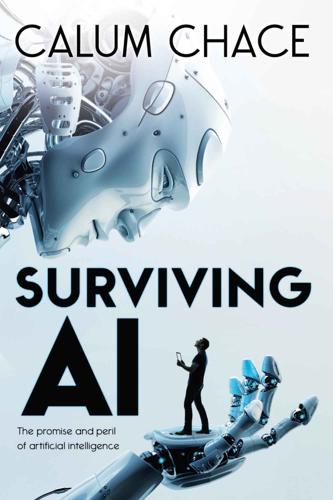
Surviving AI: The Promise and Peril of Artificial Intelligence
by
Calum Chace
Published 28 Jul 2015
Babbage never finished the construction of his devices, although working machines have recently been built based on his designs. His Difference Engine (designed in 1822) would carry out basic mathematical functions, and the Analytical Engine (design never completed) would carry out general purpose computation. It would accept as inputs the outputs of previous computations recorded on punch cards. Babbage’s collaborator Ada Lovelace has been described as the world’s first computer programmer thanks to some of the algorithms she created for the Analytical Engine. The first electronic digital computer was the Colossus, built by code-breakers at Bletchley Park (although not by Turing). But the first general-purpose computer to be completed was ENIAC (Electronic Numerical Integrator And Computer), built at the Moore School of Electrical Engineering in Philadelphia, and unveiled in 1946.

The Case for Space: How the Revolution in Spaceflight Opens Up a Future of Limitless Possibility
by
Robert Zubrin
Published 30 Apr 2019
Energy to drive the units could be obtained from nanophotovoltaic units and stored in nanosprings or nanobatteries. To go from there to nanorobots, we need nanocomputers. Drexler proposes that these could be built out of mechanical nanomachines, along the same principle as the first mechanical computers proposed by Charles Babbage and Ada Lovelace to be built out of brass gears and wheels in the nineteenth century. Such machines could be programmed with punched tape or cards, and presumably nanoscopic analogs for these mechanical software devices could be found as well. Babbage's ingenious mechanical computers don't even remotely compare in capability to modern electronic ones, but the parts used by Drexler's nano–Babbage machines would be so small that enormous amounts of computing power could be contained in a microscopic speck.
…
The vast horde of assemblers would then turn their attention to accomplishing some task they had been programmed to execute, such as inspect a human body for cancer cells and make appropriate adjustments, manufacture huge solar sails from asteroids, or terraform a planet. Figure 8.2. Hardware and software. Charles Babbage invented the mechanical computer. The mathematician Countess Ada Lovelace, daughter of the poet Lord Byron, realized that Babbage's computers could be programmed to act like mechanical brains. Her insight could enable self-replicating nanorobots, endowing humanity with nearly unlimited power to terraform worlds. To build macroscopic structures, billions of nanorobots would have to group themselves together to form large robots, perhaps on the human scale or even much bigger.
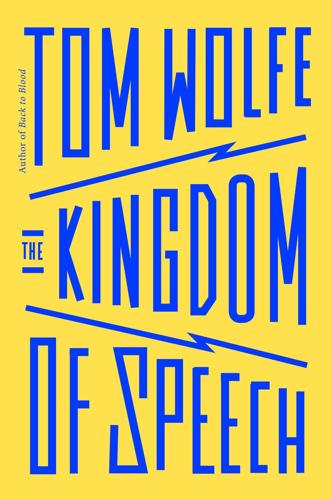
The Kingdom of Speech
by
Tom Wolfe
Published 30 Aug 2016
It transfixed readers high and low—Alfred, Lord Tennyson; Gladstone, Disraeli, Schopenhauer, Abraham Lincoln, John Stuart Mill; and Queen Victoria and Prince Albert (who read it aloud to each other)…as well as the general public—in droves. There was no author’s name on the cover or anywhere in its four hundred pages. He or she—there were those who assumed a writer this insidious must be a woman; Lord Byron’s too-clever-by-half daughter Ada Lovelace was one suspect—apparently knew what was coming.6 The book and Miss, Mrs., or Mr. Anonymous caught Holy Hell from the Church and its divines and devotees. One of the pillars of the Faith was the doctrine that Man had descended from Heaven, definitely not from monkeys in trees. Among the divines, the most ferocious attack was the Reverend Adam Sedgwick’s in the Edinburgh Review.7 Sedgwick was an Anglican priest and prominent geologist at Cambridge.

The People vs Tech: How the Internet Is Killing Democracy (And How We Save It)
by
Jamie Bartlett
Published 4 Apr 2018
The founding myth for social media is that they are the heirs to the ‘hacker culture’ – Facebook’s HQ address is 1, Hacker Way – which ties them to rule-breakers like 1980s phone phreaker Kevin Mitnick, the bureaucracy-hating computer lovers of the Homebrew Club scene and further back to maths geniuses like Alan Turing or Ada Lovelace. But Google, Snapchat, Twitter, Instagram, Facebook and the rest have long ceased to be simply tech firms. They are also advertising companies. Around 90 per cent of Facebook and Google’s revenue comes from selling adverts. The basis of practically the entire business of social media is the provision of free services in exchange for data, which the companies can then use to target us with adverts.* This suggests a very different, and far less glamorous, lineage: a decades-long struggle by suited ad men and psychologists to uncover the mysteries of human decision-making and locate the ‘buy!’

Computer: A History of the Information Machine
by
Martin Campbell-Kelly
and
Nathan Ensmenger
Published 29 Jul 2013
She has been pronounced the world’s first programmer and even had a programming language (Ada) named in her honor. Later scholarship has shown that most of the technical content and all of the programs in the Sketch were Babbage’s work. But even if the Sketch were based almost entirely on Babbage’s ideas, there is no question that Ada Lovelace provided its voice. Her role as the prime expositor of the Analytical Engine was of enormous importance to Babbage, and he described her, without any trace of condescension, as his “dear and much admired Interpreter.” Shortly after his return from Italy, Babbage once again began to negotiate with the British government for funding of the Analytical Engine.
…
The world’s first practical stored-program computer had come to life, and with it the dawn of the computer age. FROM BABBAGE’S DIFFERENCE ENGINE TO SYSTEM/360 In 1820 the English mathematician Charles Babbage invented the Difference Engine, the first fully automatic computing machine. Babbage’s friend Ada Lovelace wrote a Sketch of the Analytical Engine (1843), which was the best description of the machine until recent times. In the 1970s the programming language Ada was named in Lovelace’s honor. BABBAGE PORTRAIT AND DIFFERENCE ENGINE COURTESY OF CHARLES BABBAGE INSTITUTE, UNIVERSITY OF MINNESOTA; LOVELACE PORTRAIT COURTESY OF SCIENCE MUSEUM, LONDON.

Robot Rules: Regulating Artificial Intelligence
by
Jacob Turner
Published 29 Oct 2018
See also Daniel Susskind and Richard Susskind, The Future of the Professions : How Technology Will Transform the Work of Human Experts (Oxford: Oxford University Press, 2015). 5See Nick Bostrom, Superintelligence (Oxford: Oxford University Press, 2014). 6See Ray Kurzweil, The Singularity Is Near: When Humans Transcend Biology (New York: Viking Press, 2005). 7Several nineteenth-century thinkers including Charles Babbage and Ada Lovelace arguably predicted the advent of AI and even prepared designs for machines capable of carrying out intelligent tasks. There is some debate as to whether Babbage actually believed that such a machine was capable of cognition. See, for example, Christopher D. Green, “Charles Babbage, the Analytical Engine, and the Possibility of a 19th-Century Cognitive Science”, in The Transformation of Psychology, edited by Christopher D. Green, Thomas Teo, and Marlene Shore (Washington, DC: American Psychological Association Press, 2001), 133–152. See also Ada Lovelace, “Notes by the Translator”, Reprinted in R.A.

Blood in the Machine: The Origins of the Rebellion Against Big Tech
by
Brian Merchant
Published 25 Sep 2023
Less than two decades after the Luddite uprisings, the effort to imagine and build human-free factories began in earnest. Charles Babbage, the inventor of the schema for one of the first modern computers, would declare that his difference engine could be used to computerize the entire factory system. (In an ironic twist, Lord Byron’s estranged daughter, Ada Lovelace, would write history’s first software programs by expanding on Babbage’s work.) In 1832, Babbage published On the Economy of Machinery and Manufactures, which argued that factories and machinery were the great drivers of prosperity. It helped launch a trend of books known as factory guides, tomes intended to drum up public support for the institution at a time of gathering doubts, and to extol the virtues of the machinery that made them possible.
…
Chased out of Strasbourg after allegations that he had been robbing graveyards for his anatomical experiments, Dippel was convinced that he could bring a body back to life by injecting it with a concoction of blood and bone, often made from both mammal and human corpses. 6. Byron later published the story Byron’s poem, “A Fragment,” was published on June 17, 1816. 7. (“not devoid of imagination”) Betsy Morais explores the legacy and technology philosophy of Augusta Ada Byron in her New Yorker piece, “Ada Lovelace, the First Tech Visionary,” The New Yorker, October 15, 2013, as does Claire L. Evans in her book Broad Band: The Untold Story of the Women Who Made the Internet (New York: Portfolio, 2018). “I do not believe that my father was (or ever could have been) such a Poet as I shall be and Analyst; (& Metaphysician),” Lovelace wrote in one of her letters to Babbage, per Evans, 15. 8.

When Things Start to Think
by
Neil A. Gershenfeld
Published 15 Feb 1999
Babbage oversaw the construction of a small version of the Difference Engine before the project collapsed due to management problems, lack of funding, and the difficulty of fabricating such complex mechanisms to the required tolerances. But these mundane details didn't stop him from turning to an even more ambitious project, the Analytical Engine. This was to be a machine that could reason with abstract concepts and not just numbers. Babbage and his accomplice, Lady Ada Lovelace, realized that an engine could just as well manipulate the symbols of a mathematical formula. Its mechanism could embody the rules for, say, calculus and punch out the result of a derivation. As Lady Lovelace put it, "the Analytical Engine weaves algebraical patterns just as the Jacquard Loom weaves flowers and leaves."
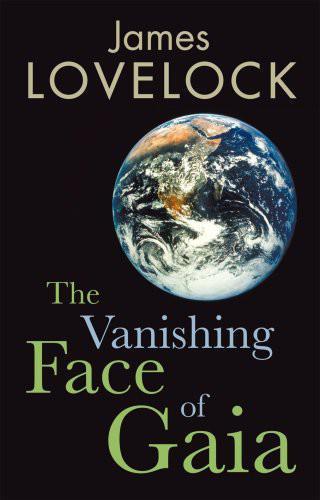
The Vanishing Face of Gaia: A Final Warning
by
James E. Lovelock
Published 1 Jan 2009
Even Gaia theory was discovered in the fertile environment of the Jet Propulsion Laboratory in California, and the one biologist who understood it and developed it further was that eminent American scientist Lynn Margulis. Of course, advances in science and technology emerged in Europe in the Middle Ages and moved its centre of excellence among the nations. In computer technology and theory Babbage, Ada Lovelace and that most tragic of men Alan Turing all did the groundwork here in the UK. Turing was the one who with his group built the first serious computing device and used it to deconvolute the otherwise unbreakable code of our wartime enemies. But that was then. Now America is at the centre of science.
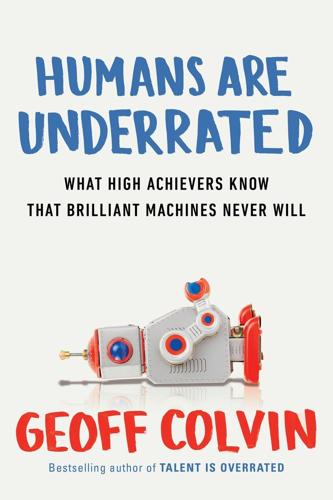
Humans Are Underrated: What High Achievers Know That Brilliant Machines Never Will
by
Geoff Colvin
Published 3 Aug 2015
Besides losing in competition with women, they are likely to lose disproportionately in competition with technology. This seems odd, considering that men, on average, are attracted to technology and have been, on average, the sex most responsible for the technology revolution. Of course, a number of computer pioneers were unsung women—Ada Lovelace, Grace Hopper, Jean Jennings, to name a few—who are only beginning to get the recognition they deserve. But it’s undeniable that the industry has been and remains dominated by men, a situation that many companies, schools, and governments worldwide are trying to remedy. Yet the surprising new trend is that for men in general, technology’s advance is becoming a problem.
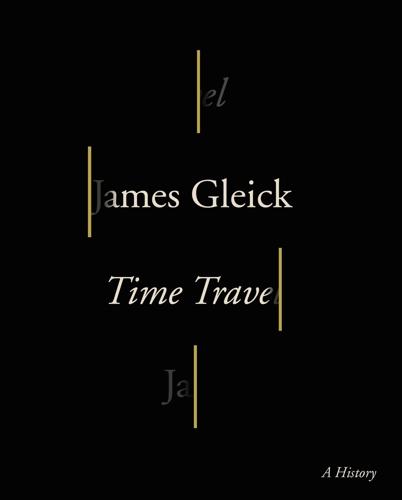
Time Travel: A History
by
James Gleick
Published 26 Sep 2016
In the 1860s, as railroad trains chugged across the countryside and sailing ships gave way to steam, he imagined vessels traveling under the sea, across the skies, to the center of the earth, and to the moon. We would say he was a man ahead of his time—he had an awareness, a sensibility, suited to a later era. Edgar Allan Poe was ahead of his time. The Victorian mathematician Charles Babbage and his protégé Ada Lovelace, forerunners of modern computing, were ahead of their time. Jules Verne was so far ahead of his time that he could never even find a publisher for his most futuristic book, Paris au XXe siècle, a dystopia featuring gas-powered cars, “boulevards lit as brightly as by the sun,” and machine warfare.

Prediction Machines: The Simple Economics of Artificial Intelligence
by
Ajay Agrawal
,
Joshua Gans
and
Avi Goldfarb
Published 16 Apr 2018
The advent and commercialization of computers made arithmetic cheap.5 When arithmetic became cheap, not only did we use more of it for traditional applications of arithmetic, but we also used the newly cheap arithmetic for applications that were not traditionally associated with arithmetic, like music. Heralded as the first computer programmer, Ada Lovelace was the first to see this potential. Working under very expensive light in the early 1800s, she wrote the earliest recorded program to compute a series of numbers (called Bernoulli numbers) on a still-theoretical computer that Charles Babbage designed. Babbage was also an economist, and as we will see in this book, that was not the only time economics and computer science intersected.
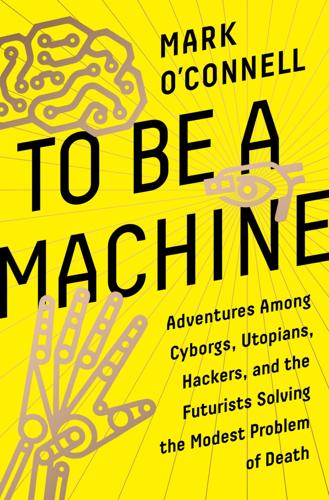
To Be a Machine: Adventures Among Cyborgs, Utopians, Hackers, and the Futurists Solving the Modest Problem of Death
by
Mark O'Connell
Published 28 Feb 2017
With these invocations, he moves his arms downward, then outward to either side, before clasping his hands to his chest. He turns about the room, bestowing a gesture of esoteric benediction on the four points of the compass, speaking in each of these positions the hallowed name of a prophet of the computer age: Alan Turing, John von Neumann, Charles Babbage, Ada Lovelace. Then he stands perfectly still, this priestly young man, arms outspread in a cruciform posture. “Around me shines the bits,” he says, “and in me is the bytes. The data, the code, the communications. Forever, amen.” This young man, I learned, was a Swedish academic named Anders Sandberg. I was fascinated by the explicitness of Sandberg’s curious ritual, its cultic acting out of transhumanism’s religious subtext, but could not accurately gauge how seriously to take it—whether the performance was partly playful, partly parodic.
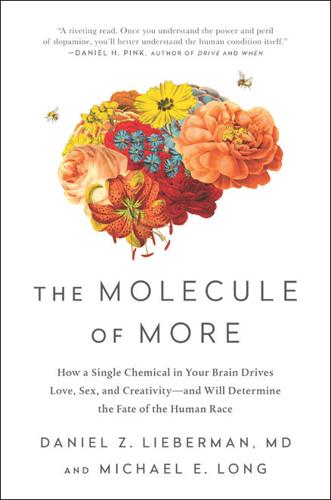
The Molecule of More: How a Single Chemical in Your Brain Drives Love, Sex, and Creativityand Will Det Ermine the Fate of the Human Race
by
Daniel Z. Lieberman
and
Michael E. Long
Published 13 Aug 2018
Smarter brains had a greater risk of developing a dopaminergic mental illness compared to ordinary ones. Many famous, creative people have revealed that they live with bipolar disorder. Among them are Francis Ford Coppola, Ray Davies, Patty Duke, Carrie Fisher, Mel Gibson, Ernest Hemingway, Abbie Hoffman, Patrick Kennedy, Ada Lovelace, Marilyn Monroe, Sinéad O’Connor, Lou Reed, Frank Sinatra, Britney Spears, Ted Turner, Jean-Claude Van Damme, Virginia Woolf, and Catherine Zeta-Jones. There are also many noteworthy people from the past who, based on historical documents, are thought to have had bipolar disorder. They include Charles Dickens, Florence Nightingale, Friedrich Nietzsche, and Edgar Allan Poe.
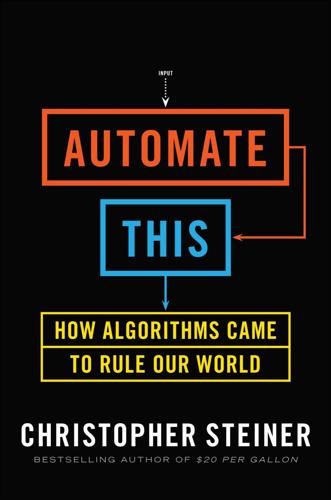
Automate This: How Algorithms Came to Rule Our World
by
Christopher Steiner
Published 29 Aug 2012
Boole’s ideas did not set the world on fire after he published. Few Britons, including the country’s mathematicians, were familiar with logic theory. And there was no obvious way to apply what’s now called Boolean algebra without machines or computers capable of reading algorithms. That’s not to say nobody tried. Perhaps the most important was Ada Lovelace, who, aside from being a female math scholar in a time when few women were allowed to study, is often recognized as the first hacker. In 1842, while documenting Charles Babbage’s Analytical Engine, a mechanical computing machine that Babbage never completed, Lovelace devised several different inputs that, theoretically, would make the machine perform certain calculations and tasks.

The Perfect Bet: How Science and Math Are Taking the Luck Out of Gambling
by
Adam Kucharski
Published 23 Feb 2016
The computer programs sat through billions of hands, betting and bluffing, their artificial brains developing while they played. As the bots improved, Dahl found that they began to do some surprising things. IN HIS LANDMARK 1952 paper “Computing Machinery and Intelligence,” Turing pointed out that many people were skeptical about the possibility of artificial intelligence. One criticism, put forward by mathematician Ada Lovelace in the nineteenth century, was that machines could not create anything original. They could only do what they were told. Which meant a machine would never take us by surprise. Turing disagreed with Lovelace, noting that “machines take me by surprise with great frequency.” He generally put these surprises down to oversight.

Lurking: How a Person Became a User
by
Joanne McNeil
Published 25 Feb 2020
Even in later years, hardly anyone has set their film or fiction in this time period and scene (notable exception: Thomas Pynchon’s Bleeding Edge, 2013). Until then, we might look to nineties San Francisco for West Coast context, including Lynn Hershman Leeson, who made the film Conceiving Ada, about a computer artist making a CD-ROM, which starred Tilda Swinton as Ada Lovelace and included appearances by John Perry Barlow, Bruce Sterling, and Timothy Leary. That same year—1997—Ellen Ullman’s Close to the Machine (City Lights) was published, recounting her work as a computer engineer. I wrote about the camgirl art movement in the 2014 book Art and the Internet (Black Dog Publishing, 2014, 18–23).
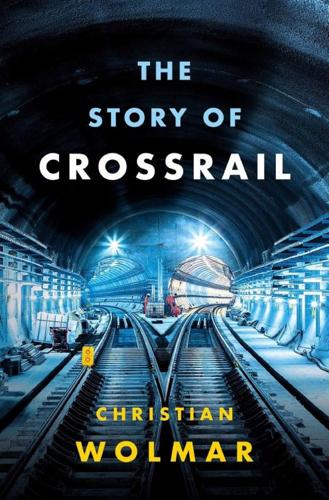
The Story of Crossrail
by
Christian Wolmar
Published 5 Sep 2018
Phyllis and Ada were named after two rather different women: the painter and writer Phyllis Pearsall (1906–96), devised the A–Z street map of London in the 1930s (supposedly being inspired to do so after getting lost in London while using the latest street map, which turned out to be hopelessly out of date); Ada Lovelace (1815–52) was an early computer scientist (and Lord Byron’s only legitimate daughter). The tradition in the tunnelling business that boring machines have to be named after women to ensure good luck dates back to the sixteenth century, when miners prayed to St Barbara, a third-century martyr murdered by her father for becoming a Christian.
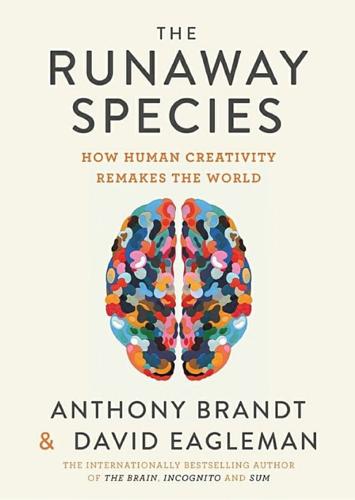
The Runaway Species: How Human Creativity Remakes the World
by
David Eagleman
and
Anthony Brandt
Published 30 Sep 2017
Consider that for most of our civilization’s history – and still in many parts of the world – more than half the human population has been denied an education and professional advancement because of gender. The child prodigy Nannerl Mozart toured Europe with her younger brother Wolfgang, where she was frequently the main attraction; however, as soon as she reached marrying age, her parents cut short her career. Mathematician Ada Lovelace disguised her gender by using a pseudonym when she laid out the principles for computer programming. Her mathematical insights were so far ahead of their time that her peers did not know what to make of them; more than a century later, her computer models were reinvented by her male counterparts.

Artificial Unintelligence: How Computers Misunderstand the World
by
Meredith Broussard
Published 19 Apr 2018
However, in 1837, Babbage published another, better idea: an analytical engine. This was a design for a machine that could interpret a programming language with conditional branching and loops; it had features recognizable from today’s computers, like the ability to perform arithmetic and process logic and add memory. Ada Lovelace, generally considered the first computer programmer, wrote programs for this hypothetical machine. Unfortunately, the analytical engine was so far ahead of its time that it didn’t work either. Scientists assembled it from Babbage’s designs in 1991 and discovered that it would have worked—if there were important other components, like electricity.
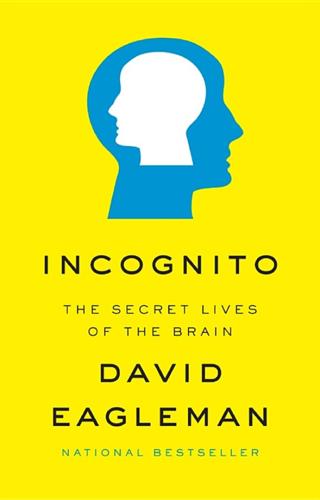
Incognito: The Secret Lives of the Brain
by
David Eagleman
Published 29 May 2011
There’s Someone In My Head, But It’s Not Me 1 Music: “Tremendous Magic,” Time December 4, 1950. 2 Something I’ve always found inspiring: the year Galileo died—1642—Isaac Newton was born into the world and completed Galileo’s job by describing the equations underlying the planetary orbits around the sun. 3 Aquinas, Summa theologiae. 4 Specifically, Leibniz envisioned a machine that would use marbles (representing binary numbers) that would be guided by what we now recognize as cousins to punch cards. Although Charles Babbage and Ada Lovelace are generally credited with working out the concepts of software separation, the modern computer is essentially no different than what Leibniz envisaged: “This [binary] calculus could be implemented by a machine (without wheels) in the following manner, easily to be sure and without effort. A container shall be provided with holes in such a way that they can be opened and closed.
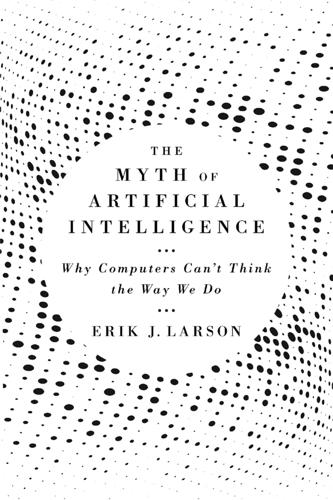
The Myth of Artificial Intelligence: Why Computers Can't Think the Way We Do
by
Erik J. Larson
Published 5 Apr 2021
He credited his pupil, and his pupil’s predecessor: “Yet the logical machines of Jevon and Marquand are mills into which the premises are fed and which turn out the conclusions by the revolution of a crank.” The American inventor Charles Henry Webb, too, had designed a machine for performing arithmetic, and the English genius Charles Babbage developed a proof of concept (along with his protégé Ada Lovelace) for a more visionary machine, performing general computations. They were machines that could “perform reasoning of no simple kind.”16 “Logical Machines” then departs into detailed discussion of automating deductive syllogisms. At the end of the paper, tying up loose ends, Peirce comments on the possibility of what we now call Artificial Intelligence.

QI: The Second Book of General Ignorance
by
Lloyd, John
and
Mitchinson, John
Published 7 Oct 2010
Despite patenting the cowcatcher for locomotives, and a pair of shears that made the metal tips for shoelaces, Babbage died embittered and forgotten. He had failed to find the money to build his greatest invention, a computer in the modern sense, with a memory and a printer, run by a programme that used punched cards. This first programming ‘language’ was the work of Ada Lovelace (1815–52), daughter of the poet Lord Byron, who understood the potential of Babbage’s work even better than he did, predicting (in the 1840s) that computers would one day play chess and music. Using Babbage’s plans, two Swedish engineers, George and Edward Schuetz, completed the first prototype of what Babbage called his ‘Difference Engine’ in 1853.

Cataloging the World: Paul Otlet and the Birth of the Information Age
by
Alex Wright
Published 6 Jun 2014
He saw these developments as fundamentally connected to a larger utopian project that would bring the world closer to a state of permanent and lasting peace and toward a state of collective spiritual enlightenment. The conventional history of the Internet traces its roots through an Anglo-American lineage of early computer scientists like Charles Babbage, Ada Lovelace, and Alan Turing; networking visionaries like Vinton G. Cerf and Robert E. Kahn; as well as hypertext seers like Vannevar Bush, J. C. R. Licklider, Douglas Engelbart, Ted Nelson, and of course Tim Berners-Lee and Robert Cailliau, who in 1991 released their first version of the World Wide Web. The dominant influence of the modern computer industry has placed computer science at the center of this story.

Artificial Intelligence: A Guide for Thinking Humans
by
Melanie Mitchell
Published 14 Oct 2019
Kahn, “To Get Ready for Robot Driving, Some Want to Reprogram Pedestrians,” Bloomberg, Aug. 16, 2018, www.bloomberg.com/news/articles/2018-08-16/to-get-ready-for-robot-driving-some-want-to-reprogram-pedestrians. 5. “Artificial Intelligence, Automation, and the Economy,” Executive Office of the President, Dec. 2016, www.whitehouse.gov/sites/whitehouse.gov/files/images/EMBARGOED%20AI%20Economy%20Report.pdf. 6. This harks back to what Alan Turing called “Lady Lovelace’s objection,” named for Lady Ada Lovelace, a British mathematician and writer who worked with Charles Babbage on developing the Analytical Engine, a nineteenth-century proposal for a (never completed) programmable computer. Turing quotes from Lady Lovelace’s writings: “The Analytical Engine has no pretensions to originate anything. It can do whatever we know how to order it to perform.”
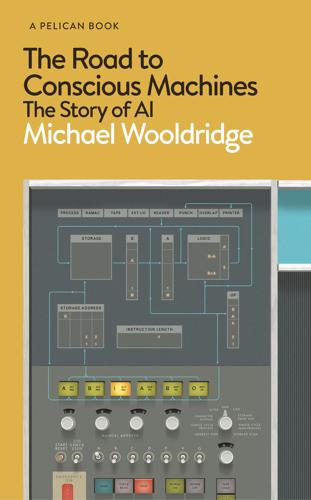
The Road to Conscious Machines
by
Michael Wooldridge
Published 2 Nov 2018
We could begin in the early nineteenth century with the young Mary Shelley, cooped up in a Swiss villa during a spell of bad weather, creating the story of Frankenstein to entertain her husband, the poet Percy Bysshe Shelley, and their family friend, the notorious Lord Byron. We could begin in London in the 1830s with Ada Lovelace, estranged daughter of the same Lord Byron, striking up a friendship with Charles Babbage, curmudgeonly inventor of mechanical calculating machines, and inspiring the brilliant young Ada to speculate about whether machines might ultimately be creative. We could equally well begin with the eighteenth-century fascination with automata – cunningly designed machines that gave some illusion of life.
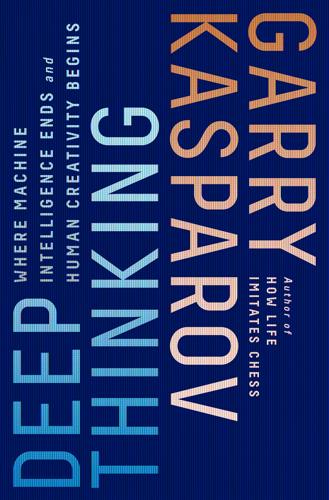
Deep Thinking: Where Machine Intelligence Ends and Human Creativity Begins
by
Garry Kasparov
Published 1 May 2017
Mechanical calculators had been around since the seventeenth century and key-driven desktop versions were produced in the thousands by the middle of the nineteenth. Programmable mechanical calculators were designed by Charles Babbage in 1834, and the first “computer” program for one was written by Ada Lovelace in 1843. Despite the impressive sophistication of these machines, nobody seriously wondered if they were intelligent any more than they did about pocket watches or steam locomotives. Even if you had no idea how a mechanical device like a cash register performed, you could hear the wheels spinning.

Human Compatible: Artificial Intelligence and the Problem of Control
by
Stuart Russell
Published 7 Oct 2019
We do not want to be in a similar situation vis-à-vis superintelligent machines. I’ll call this the gorilla problem—specifically, the problem of whether humans can maintain their supremacy and autonomy in a world that includes machines with substantially greater intelligence. Charles Babbage and Ada Lovelace, who designed and wrote programs for the Analytical Engine in 1842, were aware of its potential but seemed to have no qualms about it.1 In 1847, however, Richard Thornton, editor of the Primitive Expounder, a religious journal, railed against mechanical calculators:2 Mind . . . outruns itself and does away with the necessity of its own existence by inventing machines to do its own thinking. . . .
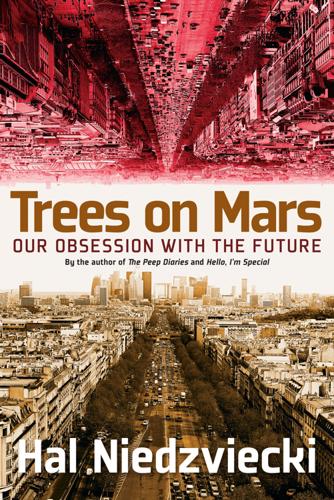
Trees on Mars: Our Obsession With the Future
by
Hal Niedzviecki
Published 15 Mar 2015
But first, there would be Charles Babbage, who never did quite manage to bend the steam technologies of nineteenth-century England into his difference engine—the massive calculating machine he believed he could build. But that didn’t stop his supporters from trumpeting what the thing would and could eventually do. In particular, Ada Lovelace, daughter of the poet Lord Byron and Babbage’s mathematically gifted muse, enthused that Babbage’s analytical engine would not just calculate numbers, it would perform operations on “any process which alters the mutual relation of two or more things.” She went on: “This is the most general definition, and would include all subjects in the universe.”18 Lovelace, dubbed everything from “the prophet of the computer age” to “the enchantress of numbers,” had that rare combination of mathematical genius and inherited gift for language; as a result she had a vision for what a language of pure information could make possible—just about anything.
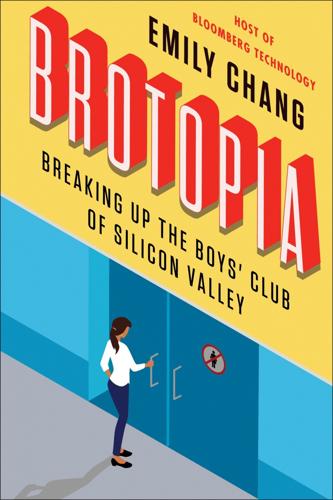
Brotopia: Breaking Up the Boys' Club of Silicon Valley
by
Emily Chang
Published 6 Feb 2018
In many ways, the industry sabotaged itself and its own pipeline of bright female talent. • • • WHILE THERE MIGHT HAVE been no women in Pratt’s lab on the day Lena’s image was chosen, what many don’t realize is that women played crucial roles in the burgeoning technology industry. In the 1840s, a woman and brilliant mathematician named Ada Lovelace wrote the first program for a computer that had yet to be built. A century later, women were among the pioneers who worked on the first computing devices for the military during World War II. Women were marginalized once peace was restored. After that setback, however, the percentage of computer science bachelor’s degrees awarded to women steadily increased.

The Data Detective: Ten Easy Rules to Make Sense of Statistics
by
Tim Harford
Published 2 Feb 2021
At the age of nine she was categorizing and graphing the plants in her garden. As she grew older, she successfully pleaded with her parents to receive high-quality mathematical tuition; at dinner parties she met the likes of Charles Babbage, a mathematician and designer of a now-famous proto-computer; she was a houseguest of Ada Lovelace, Babbage’s collaborator; and she corresponded with the great Belgian statistician Adolphe Quetelet. Quetelet was the person who popularized the idea of taking the “average” or “arithmetic mean” of a group, which was a revolutionary way to summarize complex data with a single number. He also pioneered the idea that statistics could be used to analyze not just astronomical observations or the behavior of gases, but social, psychological, and medical questions such as the prevalence of suicide, obesity, or crime.
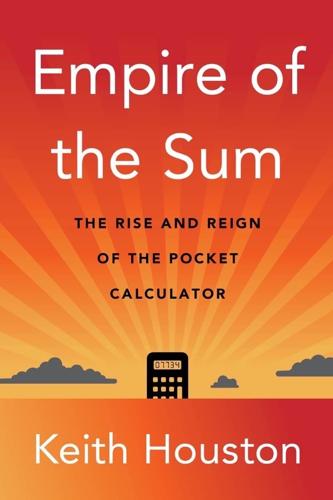
Empire of the Sum: The Rise and Reign of the Pocket Calculator
by
Keith Houston
Published 22 Aug 2023
Cambridge, MA: Harvard University, 1944. http://waywiser.fas.harvard.edu/objects/20119/ibm-asccmark-i-photo-album-leftright-panorama-of-mark-i-d. Image courtesy of Collection of Historical Scientific Instruments, Harvard University. There is a striking comparison to be drawn between Howard Aiken and Grace Hopper on the one hand and Charles Babbage and Ada Lovelace on the other. One of Aiken’s many inspirations, Babbage was the irascible nineteenth-century genius behind the fabled “analytical engine,” a mechanical computer that, had it ever been completed, would have pre-dated all other general-purpose computers, the ASCC included.56 Ada King, countess of Lovelace and the only child of the infamously “mad, bad, and dangerous to know” Lord Byron, saw more clearly than Babbage himself how the analytical engine could be turned to myriad different purposes.57 Aiken and Babbage may have invented the hardware, but Hopper and Lovelace understood that software was the key to making the best of it.

Boom: Bubbles and the End of Stagnation
by
Byrne Hobart
and
Tobias Huber
Published 29 Oct 2024
The more people who dive in with both feet, the more likely it is that their collective efforts will eventually produce something that makes all the work and risk worthwhile. The cognitive supply chain Stanley Frankel and Eldred Nelson at Los Alamos and Alan Turing at Bletchley Park in the UK can all claim an approximate tie for the title of the first modern computer programmer. There had been mechanical computing devices before World War II, with Ada Lovelace and Charles Babbage’s Difference Engine in the 1830s a notable early example. But it was during the war that engineers at Los Alamos and Bletchley Park first systematized computation in a way that would be familiar to anyone who programs today: They broke tasks down into discrete steps, some of which could be executed trivially and some of which required more hands-on effort.
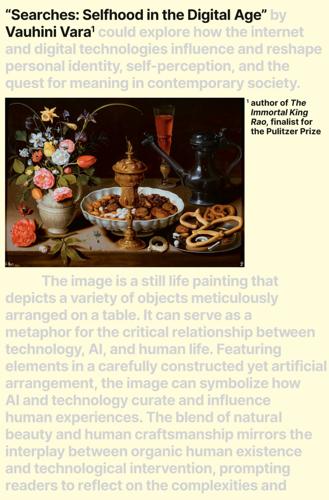
Searches: Selfhood in the Digital Age
by
Vauhini Vara
Published 8 Apr 2025
By the time Adam Smith wrote The Wealth of Nations, in 1776, he proclaimed that “the establishment of any new manufacture, of any new branch of commerce, or of any new practice in agriculture, is always a speculation, from which the projector”—that is, the investor—“promises himself extraordinary profits.” Technologists, whose work has been tied up with commerce from the start, have been especially comfortable both with speculation and with the risks inherent to it. Charles Babbage’s protégée Ada Lovelace wrote that computers’ future abilities “may not yet be possible to foresee,” then added, “Nevertheless all will probably concur in feeling that the completion of the Difference Engine”—their computer—“would be far preferable to the non-completion of any calculating engine at all.” Since modern corporations attract investment by making appealing promises about the future, the heads of tech companies essentially have a professional obligation to speculate.

Darwin Among the Machines
by
George Dyson
Published 28 Mar 2012
The three-ton device “flawlessly performed its first major calculation,” and “affirmed that Babbage’s failures were ones of practical accomplishment, not of design.”22 Babbage associated with the famous and powerful of his day (“I . . . regularly attended his famous evening parties,” recalled Charles Darwin)23 and held Isaac Newton’s Lucasian chair at Cambridge University from 1828 to 1839. His most celebrated collaboration was with the mathematically gifted Lady Augusta Ada Lovelace, daughter of the poet Lord Byron and protégée not only of Babbage but, to a lesser extent, of logician Augustus de Morgan, who was at the same time encouraging work on the Laws of Thought by George Boole. Lovelace’s extensive notes, appended to her translation of Luigi Menabrea’s description of the analytical engine (compiled after Babbage’s visit to Italy in 1841 as a guest of the future prime minister) convey the potential she saw in Babbage’s machine.

The Blockchain Alternative: Rethinking Macroeconomic Policy and Economic Theory
by
Kariappa Bheemaiah
Published 26 Feb 2017
Although he never secured the funds to develop the second project, the ideas in its design (documented in over 6000 pages of notes, hundreds of engineering drawings and operational charts) are the basis for today modern computers. These included a separated section for calculation (what we today refer to as a Central Processing Unit (CPU)), another section for storing data (or a memory) and a method of providing instructions to the machine (a programming language). Ada Lovelace, who corresponded with Babbage, also played an influential role in developing programming languages by emphasising that the Analytical Machine could manipulate symbols as well as numerical calculations. However, the real advances in programming languages came from George Boole who devised a language for describing and manipulating complex logical statements for determining the statements were true or false.

Men Who Hate Women: From Incels to Pickup Artists, the Truth About Extreme Misogyny and How It Affects Us All
by
Laura Bates
Published 2 Sep 2020
‘MGTOW.com is exclusively a men’s interest website – for men only,’ emphasises the website. Of course, MGTOW philosophy gifts this community a particularly powerful rationale for the exclusion of women. As one typical site puts it: ‘The internet was… created by men (for other men), and it is only by our divine manly grace that women are permitted to use it.’ Tell that to Ada Lovelace and Grace Hopper. MGTOW ideology has also spawned a number of spin-off and related online movements, including IBMOR (Introspective Black Men of Reform) – an online movement with extremely similar aims, but the additional desire to overthrow white supremacy. ‘INTROSPECTIVE BLACK MEN OF REFORM (IBMOR)’, declares the community page for the group, in dramatic capital letters, ‘ARE BLACK MEN WHO ARE DEDICATED TO SELF-STUDY AND SELF IMPROVEMENT.

The Equality Machine: Harnessing Digital Technology for a Brighter, More Inclusive Future
by
Orly Lobel
Published 17 Oct 2022
In his book The Master Algorithm, machine learning expert Pedro Domingos put it bluntly: “People worry that computers will get too smart and take over the world, but the real problem is that they’re too stupid and they’ve already taken over the world.”20 Being at a nascent stage of the technology—while at the same time knowing that we are heading to a future shaped by increasingly complex digital processes—means that we can act mindfully today to shape tomorrow’s equality machine. From Countess to Algorithm Once upon a time, women were pioneers of programming. In the mid-1800s, British mathematician Ada, Countess of Lovelace, created what is now considered the first algorithm for a computer. Ada Lovelace was the daughter of famed poet Lord Byron and mathematician Lady Byron (née Anne Isabella Milbanke, nicknamed Annabella), also known as the “Princess of Parallelograms.” The mathematician mom left the poet dad and set out to teach her daughter rigorously. Annabella instilled a love of math in her daughter, and in her studies Ada came across the work of the famed engineer Charles Babbage, who had invented a giant, gear-filled calculator.

The Coming Wave: Technology, Power, and the Twenty-First Century's Greatest Dilemma
by
Mustafa Suleyman
Published 4 Sep 2023
GO TO NOTE REFERENCE IN TEXT Promisingly, research on ethical AI Stanford University Human-Centered Artificial Intelligence, Artificial Intelligence Index Report 2021. GO TO NOTE REFERENCE IN TEXT Major shortfalls For example, Shannon Vallor, “Mobilising the Intellectual Resources of the Arts and Humanities,” Ada Lovelace Institute, June 25, 2021, www.adalovelaceinstitute.org/blog/mobilising-intellectual-resources-arts-humanities. GO TO NOTE REFERENCE IN TEXT Forming a coalition Kay C. James on Twitter, March 20, 2019, twitter.com/KayColesJames/status/1108365238779498497. GO TO NOTE REFERENCE IN TEXT There’s a good chance of positive “B Corps ‘Go Beyond’ Business as Usual,” B Lab, March 1, 2023, www.bcorporation.net/en-us/news/press/b-corps-go-beyond-business-as-usual-for-b-corp-month-2023.

The Man From the Future: The Visionary Life of John Von Neumann
by
Ananyo Bhattacharya
Published 6 Oct 2021
Like the loom, the Analytical Engine, a mechanical computer designed in the 1830s by the English polymath Charles Babbage, was to be programmed with strings of punched cards. ‘We may say most aptly that the Analytical Engine weaves algebraic patterns just as the Jacquard loom weaves flowers and leaves,’ wrote Babbage’s collaborator, the mathematician Countess Ada Lovelace. Sadly, Babbage never managed to raise the sizeable sum he needed to build the machine. Jacquard’s place in the history of computing was assured by his loom’s influence on Herman Hollerith, an enterprising civil servant who worked for the United States Census Bureau. Less than twenty years after Babbage’s death in 1871, Hollerith was granted a patent for an electromechanical device ‘to simplify and thereby facilitate the compilation of statistics’ by recording information using holes in a roll of paper tape – though he quickly switched to more robust punched cards.

Work Won't Love You Back: How Devotion to Our Jobs Keeps Us Exploited, Exhausted, and Alone
by
Sarah Jaffe
Published 26 Jan 2021
Oh, it’s 2 p.m.’” And after all the time that he spends dedicating himself to making games, he said, he doesn’t really play them that much anymore. He laughed, “I don’t have time. I sneak one in every now and then.” PROGRAMMING, A FIELD CURRENTLY DOMINATED BY YOUNG MEN, WAS invented by a woman. Ada Lovelace was the daughter of Romantic poet Lord Byron, but her mother steered her into mathematics, “as if that were an antidote to being poetic.” Lovelace was inspired by mechanical weaving looms to design a program for Charles Babbage’s “Analytical Engine,” an early idea of a computer. Her insight was that the computer could be used not just to calculate complex equations but to handle music, graphics, words, anything that could be reduced to a code—perhaps even games.

Greater: Britain After the Storm
by
Penny Mordaunt
and
Chris Lewis
Published 19 May 2021
Our inventions and the impact they have had on the world, ‘from inventing the World Wide Web to bringing about new industrial and manufacturing processes that have raised the living standards of literally billions of people around the world’. Others focused on consistency and longevity: For centuries, we’ve been at the heart of technological innovation. Through figures like Charles Babbage, Ada Lovelace and, more recently, Tim Berners-Lee, we’ve pioneered computing, algorithms and cyberspace. These are breakthroughs that have changed the world as we know it beyond recognition, and they will continue to ensure that the UK shapes the direction of the world. Our engineering skills were mentioned frequently, as were Britain’s ‘creativity and ingenuity’.

What We Owe the Future: A Million-Year View
by
William MacAskill
Published 31 Aug 2022
If they were not, then we would expect the recent dramatic increase in population size to be associated with ever-expanding human misery, but in fact we’ve seen the opposite. Think about how much worse the world would be if Benjamin Lay, Frederick Douglass, and Harriet Tubman had never existed, or if Marie Curie, Ada Lovelace, or Isaac Newton had never been born. Remember, you are population too!36 If you think you have made the world a better place, then you must think that new people can as well. In addition to the positive knock-on effects of having children, if your children have lives that are sufficiently good, then your decision to have them is good for them.
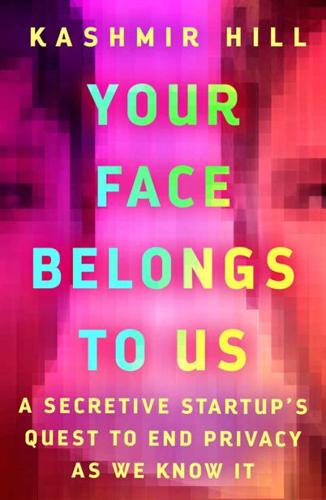
Your Face Belongs to Us: A Secretive Startup's Quest to End Privacy as We Know It
by
Kashmir Hill
Published 19 Sep 2023
GO TO NOTE REFERENCE IN TEXT polls regularly found: Vian Bakir et al., “Public Feeling on Privacy, Security and Surveillance: A Report by DATA-PSST and DCSS,” November 2015, https://orca.cardiff.ac.uk/id/eprint/87335/1/Public-Feeling-on-Privacy-Security-Surveillance-DATAPSST-DCSS-Nov2015.pdf; Joel Rogers de Waal, “Security Trumps Privacy in British Attitudes to Cyber-Surveillance,” YouGov, June 12, 2017; “Beyond Face Value: Public Attitudes to Facial Recognition Technology,” Ada Lovelace Institute, September 2, 2019 (70 percent of those polled approved of the use of facial recognition by police). GO TO NOTE REFERENCE IN TEXT Carlo’s big fear: Author’s interview with Silkie Carlo, 2022. GO TO NOTE REFERENCE IN TEXT “The facts we turn up”: Ibid.

The Music of the Primes
by
Marcus Du Sautoy
Published 26 Apr 2004
If this machine could produce any pattern, then why couldn’t he build a machine that could be fed a card to tell it to perform any mathematical computation? His blueprint for the Analytical Engine, as he named it, was a forerunner of Turing’s plan for a universal machine. It was the poet Lord Byron’s daughter, Ada Lovelace, who recognised the enormous programming potential of Babbage’s machine. While translating into French a copy of Babbage’s paper describing the machine, she couldn’t resist adding some extra notes to extol the machine’s capability. ‘We may say most aptly that the Analytical Engine weaves Algebraic patterns, just as the Jacquard loom weaves flowers and leaves.’
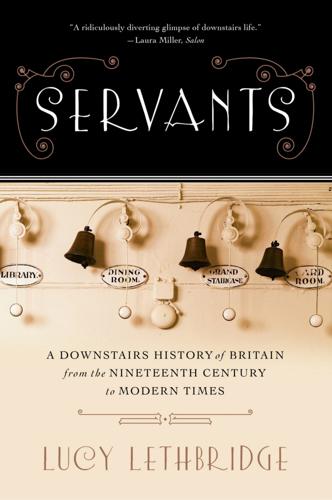
Servants: A Downstairs History of Britain From the Nineteenth Century to Modern Times
by
Lucy Lethbridge
Published 18 Nov 2013
Woman, Barbara Woman Woman and Home Woman’s Own Book of Modern Homemaking women conscription of education and liberation and end of domestic service feminism and independence and inner life and political change post-war dress and appearance post-war employment pre-war employment separate domestic space war work Women’s Electrical Association Women’s Employment Federation Women’s Institute Women’s Institute Magazine women’s magazines women’s suffrage movement Woolf, Virginia Woolton Pie workhouses working classes diet disdain for servants and middle-class contempt politics and unrest post-war aspirations respectability and servant-keeping working-time directive Wylde, Mary, A Housewife in Kensington Yeddon, Emily Yorke family Yorke, Jock Zweig, Ferdynand A Note on the Author Lucy Lethbridge has written for a number of publications and is also the author of several children’s books, one of which, Who Was Ada Lovelace?, won the 2002 Blue Peter Award for non-fiction. She lives in London. © National Trust The household servants of Erddig in Wales in 1912, each holding a tool representing their particular work. The housekeeper holds a large bunch of keys; the footman (front left) a silver salver for conveying visitors’ calling cards.

Rule Britannia: Brexit and the End of Empire
by
Danny Dorling
and
Sally Tomlinson
Published 15 Jan 2019
Much of what Cabinet members have been accused of is not specifically illegal, but it is immoral. They are members of a political party that attempts to moralise about the behaviour of others, especially people poorer than they are. When the official Downing Street photo of the Cabinet was published in 2016 (Figure 7.1), a photoshopped similar photo went viral. The huge 1836 painting of Ada Lovelace behind them had been replaced by Edvard Munch’s painting The Scream. Scream-worthy revelations of personal, financial and sexual impropriety engulfed the Cabinet at the time. Historians of the future, even those familiar with the peccadilloes of politicians in the long-distant past, may be amazed at the behaviour of the people in charge of the most important issue for Britain in the early twenty-first century – leaving the EU.
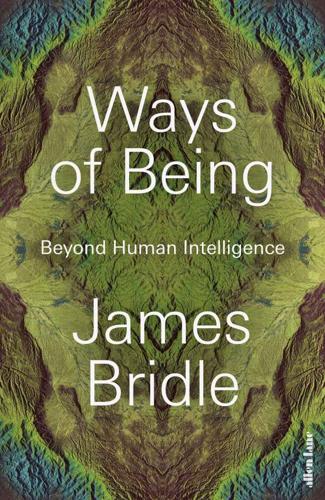
Ways of Being: Beyond Human Intelligence
by
James Bridle
Published 6 Apr 2022
These included the religious objection (machines have no soul, so cannot think); mathematical objections (per Gödel’s incompleteness theorems, no logical system can answer all possible questions); and physiological objections (the brain is not digital, but continuous, and true intelligence must share this quality). Turing provided counter-arguments to each of these objections, many of which have also proved prescient. One of the most famous objections was posited by the very first computer programmer, Ada Lovelace, when she was working on Charles Babbage’s early computer design, the Analytical Engine, in the middle of the nineteenth century. Lovelace wrote that the Engine ‘has no pretensions to originate anything. It can do whatever we know how to order it to perform.’ Computers only do what you tell them to do, thus they can never be described as intelligent.

Algorithms to Live By: The Computer Science of Human Decisions
by
Brian Christian
and
Tom Griffiths
Published 4 Apr 2016
first code ever written for a “stored program” computer: “Written,” here, means literally written out by hand: when the renowned mathematician John von Neumann jotted down the sorting program in 1945, the computer it was meant for was still several years away from completion. Although computer programs in general date back to Ada Lovelace’s writing in 1843 on the proposed “Analytical Engine” of Charles Babbage, von Neumann’s program was the first one designed to be stored in the memory of the computer itself; earlier computing machines were meant to be guided by punch cards fed into them, or wired for specific calculations. See Knuth, “Von Neumann’s First Computer Program.”

More: The 10,000-Year Rise of the World Economy
by
Philip Coggan
Published 6 Feb 2020
These errors tended to persist as scholars copied the work of their predecessors. So Babbage envisaged a machine, called the difference engine, which could perform the calculations without errors. The government gave him a grant, worth around $1m in today’s money, to pursue the project. After many failures, he was helped by Ada Lovelace, an accomplished mathematician. He went on to devise a more sophisticated machine called the analytical engine, which included many of the elements of modern computers, including the memory, central processing units and Lovelace’s algorithms (or programmes) needed to make the calculations.5 But Babbage was too early.
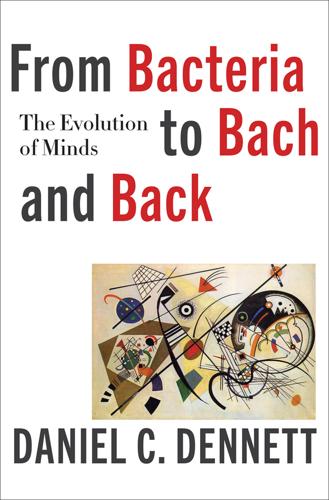
From Bacteria to Bach and Back: The Evolution of Minds
by
Daniel C. Dennett
Published 7 Feb 2017
It is an obvious fact that although there have been many brilliant women of great attainment, none of them has achieved the iconic status of Aristotle, Bach, Copernicus, Dickens, Einstein.… I could easily list a dozen more men in the same league, but try for yourself to think of a great female thinker who could readily displace any of these men in playing the emblematic role in my title. (My favorites would be Jane Austen, Marie Curie, Ada Lovelace, and Hypatia of Alexandria. I doubt I’ve overlooked any obvious candidates, but time will tell.) There have not yet been any female superstar geniuses. What might explain this fact? Political oppression? The self-fulfilling sexist prophecies that rob young girls of inspiring role models? Media bias over the centuries?

Material World: A Substantial Story of Our Past and Future
by
Ed Conway
Published 15 Jun 2023
But often it takes decades or centuries of material advances before ideas can manifest as working contraptions. That was the case with Leonardo da Vinci’s sketches of a helicopter, which couldn’t become a physical reality until the materials caught up, and it was the case with computers, which were conceptualised by Ada Lovelace and Charles Babbage more than a century before the invention of the transistor. There were computers with glass vacuum tubes playing the role of switches from the 1940s, but a solid state switch had long been the goal. Far more efficient, far more reliable, far smaller, with no moving parts, save for the electrons buzzing silently through the switches – the transistor was the material advance that birthed the modern age.
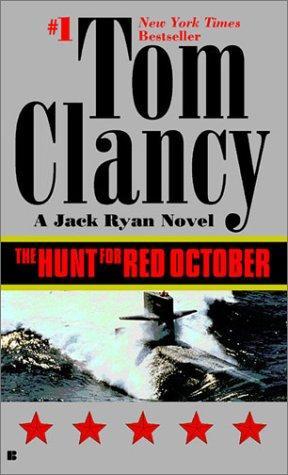
The Hunt for Red October
by
Tom Clancy
Published 2 Jan 1984
He had just finished a trial run of his program, named MORAY after the vicious eel that inhabited oceanic reefs. Skip Tyler was proud of his programming ability. He' d taken the old dinosaur program from the files of the Taylor Lab, adapted it to the common Defense Department computer language, ADA—named for Lady Ada Lovelace, daughter of Lord Byron—and then tightened it up. For most people this would have been a month's work. He'd done it in four days, working almost around the clock not only because the money was an attractive incentive but also because the project was a professional challenge. He ended the job quietly satisfied that he could still meet an impossible deadline with time to spare.

The Aristocracy of Talent: How Meritocracy Made the Modern World
by
Adrian Wooldridge
Published 2 Jun 2021
A remarkable number of women had overcome social prejudice and poor educations to achieve distinction: Jane Austen, Mary Shelley and George Eliot in literature (though, significantly, Eliot had thought it expedient to adopt a man’s name); Mary Somerville in astronomy; Elizabeth Elstob in the study of Anglo-Saxon and the early Teutonic languages; Ada Lovelace in mathematics and computing; Florence Nightingale in nursing; and, towards the end of the century, Beatrice Webb in social policy. Victorian literature is full of accounts of women who almost went mad through lack of an outlet for their talents. Perhaps the greatest English novel of the nineteenth century, George Eliot’s Middlemarch (1872), is a novel about frustration.
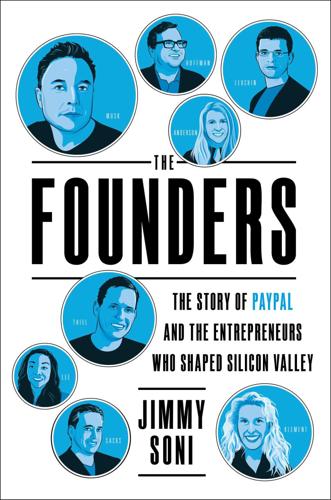
The Founders: The Story of Paypal and the Entrepreneurs Who Shaped Silicon Valley
by
Jimmy Soni
Published 22 Feb 2022
This coolness arises partly from fear of the opponents, who have the laws on their side, and partly from the incredulity of men, who do not readily believe in new things until they have had a long experience of them. —Niccolò Machiavelli, The Prince Those who have learned to walk on the threshold of the unknown worlds, by means of what are commonly termed par excellence the exact sciences, may then, with the fair white wings of imagination, hope to soar further into the unexplored amidst which we live. —Ada Lovelace Introduction “Fuck, you’re making me rummage around the attic,” said Elon Musk. We sat in his living room, but the metaphor still fit. Musk was about to tell me the story of PayPal. At the moment we met, in January 2019, PayPal—a company he cofounded some two decades earlier—was likely the furthest thing from his mind.
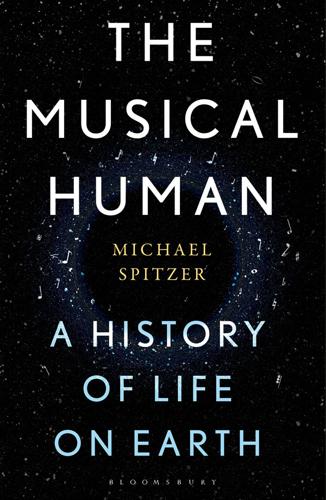
The Musical Human: A History of Life on Earth
by
Michael Spitzer
Published 31 Mar 2021
A year before being defeated by the Deep Blue chess computer, Gary Kasparov darkly warned: ‘[Computers] must not cross into the area of human creativity. It would threaten the existence of human control in such areas as art, literature, and music.’36 The shockwaves of AlphaGo’s destruction of world Go champion Fan Hui continue to reverberate. Ada Lovelace, the nineteenth-century mathematician and the mother of computer programming, had predicted that the Analytical Engine (as Charles Babbage’s early computer was called) might act upon other things besides number … supposing, for instance, that the fundamental relations of pitched sounds in the science of harmony and of musical composition were susceptible of such expression and adaptations, the engine might compose elaborate and scientific pieces of music of any degree of complexity or extent.37 Nevertheless, Lovelace cautioned that the music’s creativity or originality would come from the programmer, not the machine.

Leonardo Da Vinci
by
Walter Isaacson
Published 16 Oct 2017
He devised bifocal glasses, enchanting musical instruments, clean-burning stoves, charts of the Gulf Stream, and America’s unique style of homespun humor. Albert Einstein, when he was stymied in his pursuit of his theory of relativity, would pull out his violin and play Mozart, which helped him reconnect with the harmonies of the cosmos. Ada Lovelace, whom I profiled in a book on innovators, combined the poetic sensibility of her father, Lord Byron, with her mother’s love of the beauty of math to envision a general-purpose computer. And Steve Jobs climaxed his product launches with an image of street signs showing the intersection of the liberal arts and technology.

Empire of AI: Dreams and Nightmares in Sam Altman's OpenAI
by
Karen Hao
Published 19 May 2025
* * * — Amodei pushed his team to move quickly. As they had done with GPT-2, they trained iteratively larger models in the ascension to a full ten-thousand-GPU model with 175 billion parameters, naming them alphabetically after scientists: ada for the smallest model, referring to English mathematician Ada Lovelace, widely credited as the first computer programmer; babbage for English inventor Charles Babbage, who conceived the first digital computer for which Lovelace would propose her program; curie for Polish French physicist and chemist Marie Curie, the first woman to win the Nobel Prize and win it twice; and davinci for Leonardo.

Coders at Work
by
Peter Seibel
Published 22 Jun 2009
Both of my moms, biological and in-law, came on visits to watch the the kid and let me get some extra work done; my parents gave my wife and kid a place to escape for a week so I could make another big push. And most of all, thanks to the wife and kid themselves: Lily and Amelia, while I may occasionally need some time to myself to do the work, without you guys in my life, it wouldn't be worth doing. I love you. Introduction Leaving aside the work of Ada Lovelace—the 19th century countess who devised algorithms for Charles Babbage's never-completed Analytical Engine—computer programming has existed as a human endeavor for less than one human lifetime: it has been only 68 years since Konrad Zuse unveiled his Z3 electro-mechanical computer in 1941, the first working general-purpose computer.
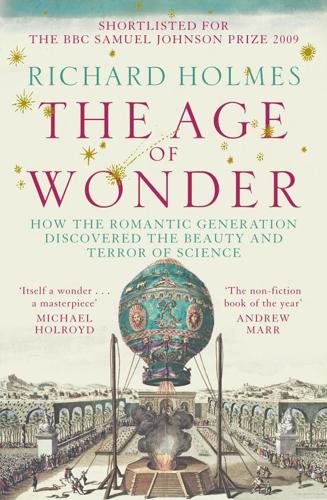
The Age of Wonder
by
Richard Holmes
Published 15 Jan 2008
Mathematician and brilliant interpreter and populariser of science for adults, especially with her broad survey of current scientific trends, On the Connexion of the Physical Sciences (1834). She translated (and clarified) Laplace’s Mécanique Céleste as The Mechanism of the Heavens (1831), and with Caroline Herschel was elected one of the first two women Fellows of the Royal Astronomical Society, 1835. She also tutored Byron’s daughter Ada Lovelace (1815-52) in mathematics. A powerful hostess in Victorian scientific circles, she was awarded the Victoria Medal of the Royal Geographical Society in 1869. The first women’s college in Oxford, Somerville - now co-educational - was named after her. ROBERT SOUTHEY, 1774-1830. Poet, critic and notable biographer.

The Stack: On Software and Sovereignty
by
Benjamin H. Bratton
Published 19 Feb 2016
One of Turing's signal achievements is to show that an artificial “machine” could approach, and even approximate, the scope of natural computation, as defined in a particular way. His innovation was the specific pairing of formal logic with industrial technology that was, even after Charles Babbage and Ada Lovelace's Victorian-era calculating machines, by no means obvious in its implications. For measuring the significance of that pairing in relation to The Stack, it is important to distinguish the limits of formal computation, on the one hand, from what the limits of actual computational technologies can really do, on the other.
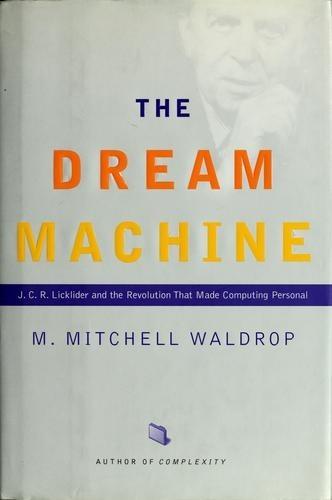
The Dream Machine: J.C.R. Licklider and the Revolution That Made Computing Personal
by
M. Mitchell Waldrop
Published 14 Apr 2001
Babbage's marvelously intricate array of brass gears was never built, unfortunately, largely due to a lack of funding and the difficulty of fab- ricating precise enough parts. Nonetheless, his patroness Augusta Ada Byron, Countess of Lovelace (and daughter of Lord Byron), wrote a number of programs for the machine to demonstrate its potential power. Moreover, Babbage's surviving designs show that his Analytical Engine would indeed have worked; today, Ada Lovelace is widely honored as the first programmer, and Charles Babbage is like- wise revered as the spiritual father of modern computing. It is certainly true that Howard Aiken, who had come across Babbage's biography in the mid-1930s, when almost no one in the United States had ever heard of him, considered himselfBab- bage's spiritual heir.

Artificial Intelligence: A Modern Approach
by
Stuart Russell
and
Peter Norvig
Published 14 Jul 2019
Move 37 by ALPHAG Oviolated centuries of Go orthodoxy and was immediately seen by human experts as an embarrassing mistake, but it turned out to be a winning move. At top left is an Atlas humanoid robot built by Boston Dynamics. A depiction of a self-driving car sensing its environment appears between Ada Lovelace, the world’s first computer programmer, and Alan Turing, whose fundamental work defined artificial intelligence. At the bottom of the chess board are a Mars Exploration Rover robot and a statue of Aristotle, who pioneered the study of logic; his planning algorithm from De Motu Animalium appears behind the authors’ names.
…
It was finally built and shown to work in 1991 (Swade, 2000). Babbage’s Analytical Engine was far more ambitious: it included addressable memory, stored programs based on Jacquard’s punched cards, and conditional jumps. It was the first machine capable of universal computation. Babbage’s colleague Ada Lovelace, daughter of the poet Lord Byron, understood its potential, describing it as “a thinking or ... a reasoning machine,” one capable of reasoning about “all subjects in the universe” (Lovelace, 1843). She also anticipated AI’s hype cycles, writing, “It is desirable to guard against the possibility of exaggerated ideas that might arise as to the powers of the Analytical Engine.”
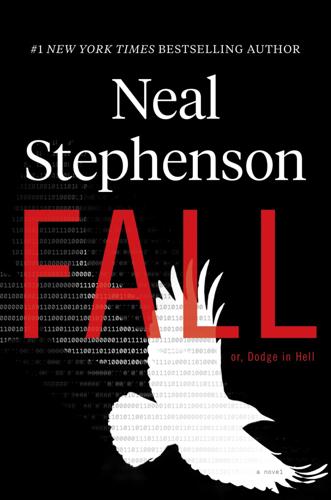
Fall; Or, Dodge in Hell
by
Neal Stephenson
Published 3 Jun 2019
The designers of this exhibit had cleverly filled in that awkward gap with some material about early mechanical computers, including a working replica of Babbage’s difference engine (built in a fit of nerd energy, and later contributed to this museum, by a different local tech magnate). There was the obligatory shrine to Ada Lovelace and then a fast-forward to the mid-twentieth century and a black-and-white photo of the young Alan Turing, Lawrence Pritchard Waterhouse, and Rudolf von Hacklheber on a bicycling expedition. This was where C-plus began to feel he was losing the thread, since the last mention of any Hacklhebers he’d seen was from 250 years earlier—but apparently this Rudolf was one of those hyperprivileged white guys who actually turned out to have legit mathematical talent.
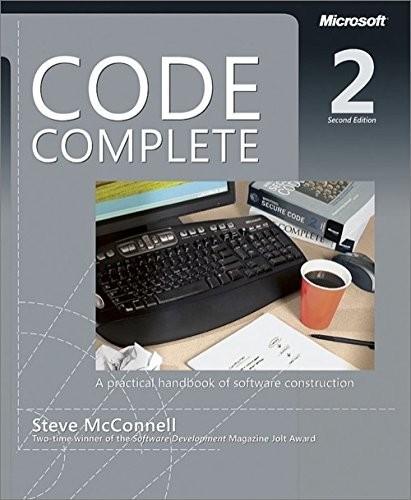
Code Complete (Developer Best Practices)
by
Steve McConnell
Published 8 Jun 2004
It was developed under the aegis of the Department of Defense and is especially well suited to real-time and embedded systems. Ada emphasizes data abstraction and information hiding and forces you to differentiate between the public and private parts of each class and package. "Ada" was chosen as the name of the language in honor of Ada Lovelace, a mathematician who is considered to have been the world's first programmer. Today, Ada is used primarily in military, space, and avionics systems. Assembly Language Assembly language, or "assembler," is a kind of low-level language in which each statement corresponds to a single machine instruction.